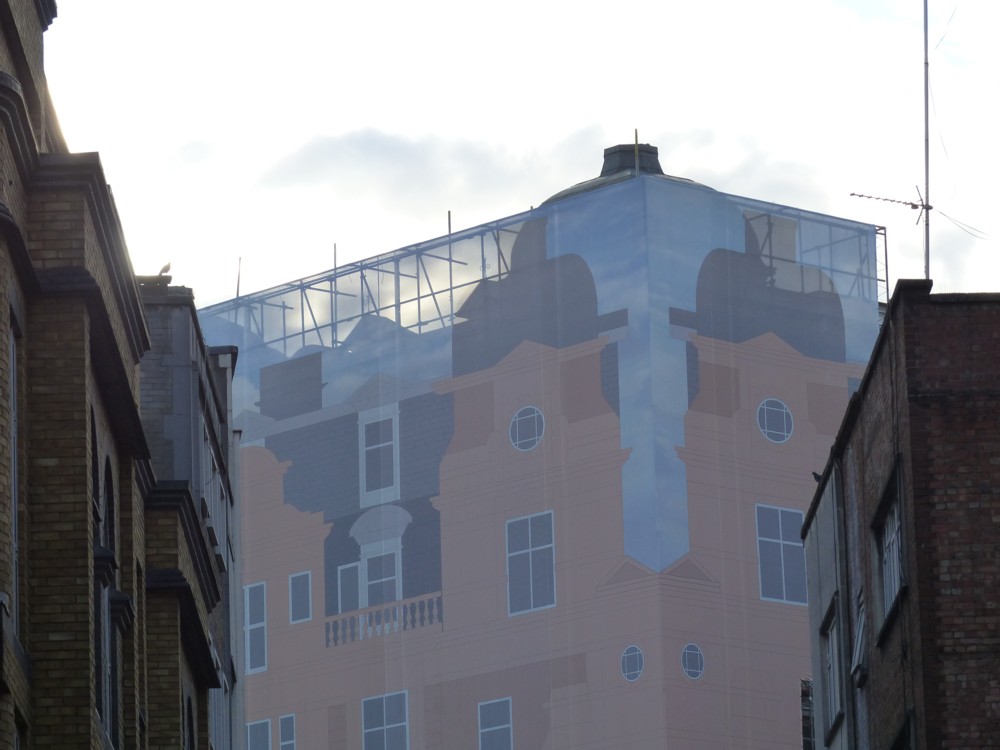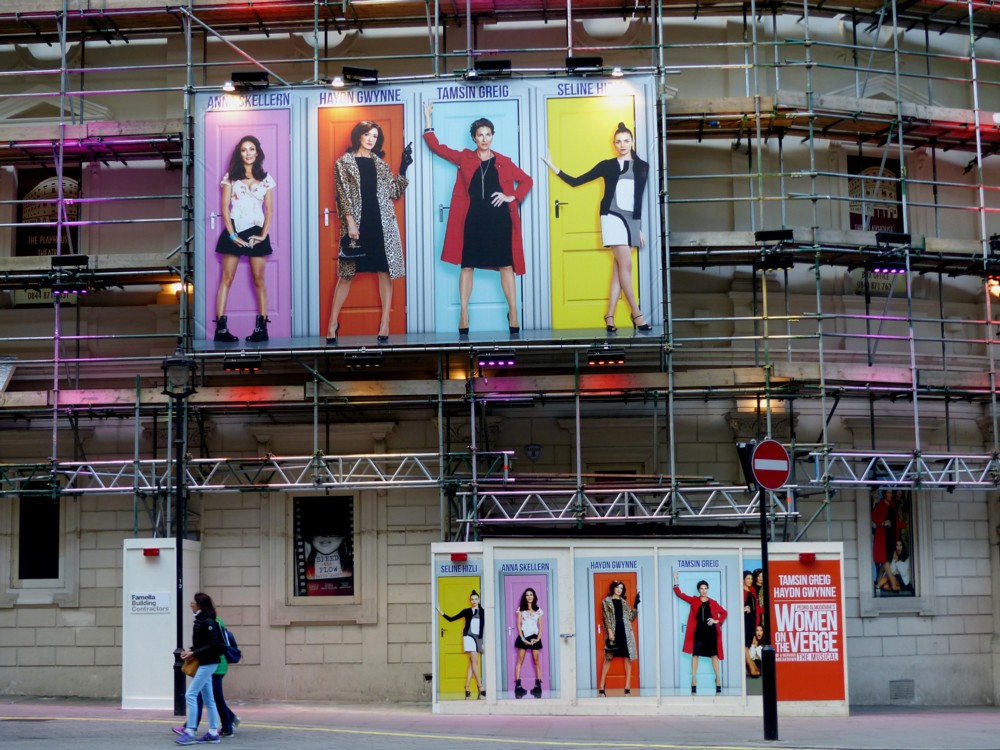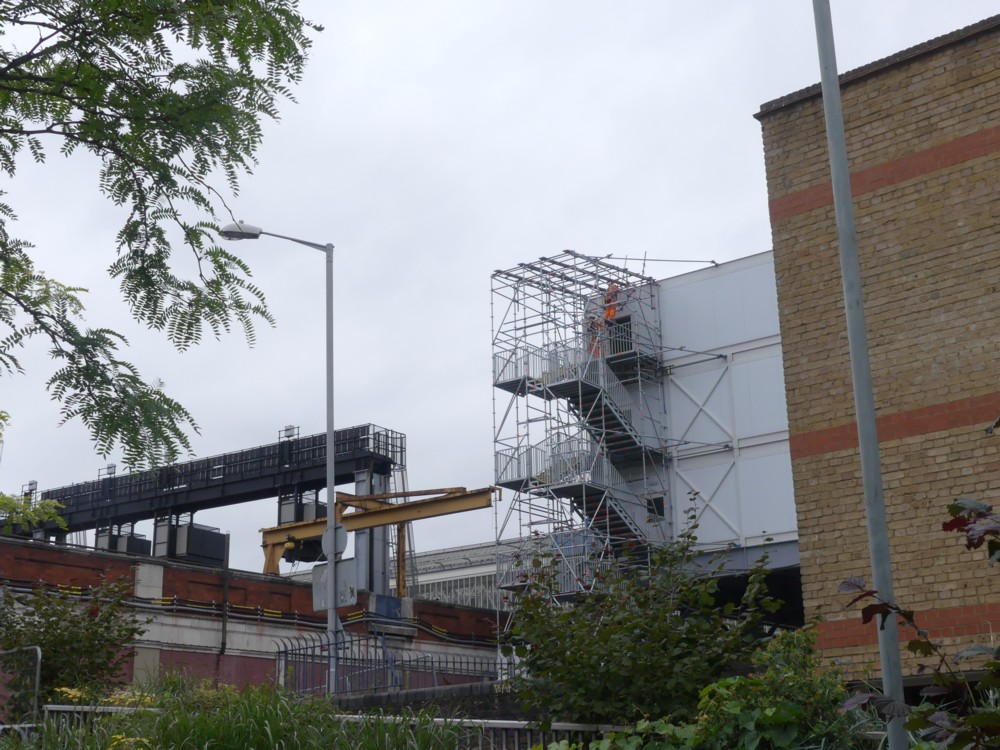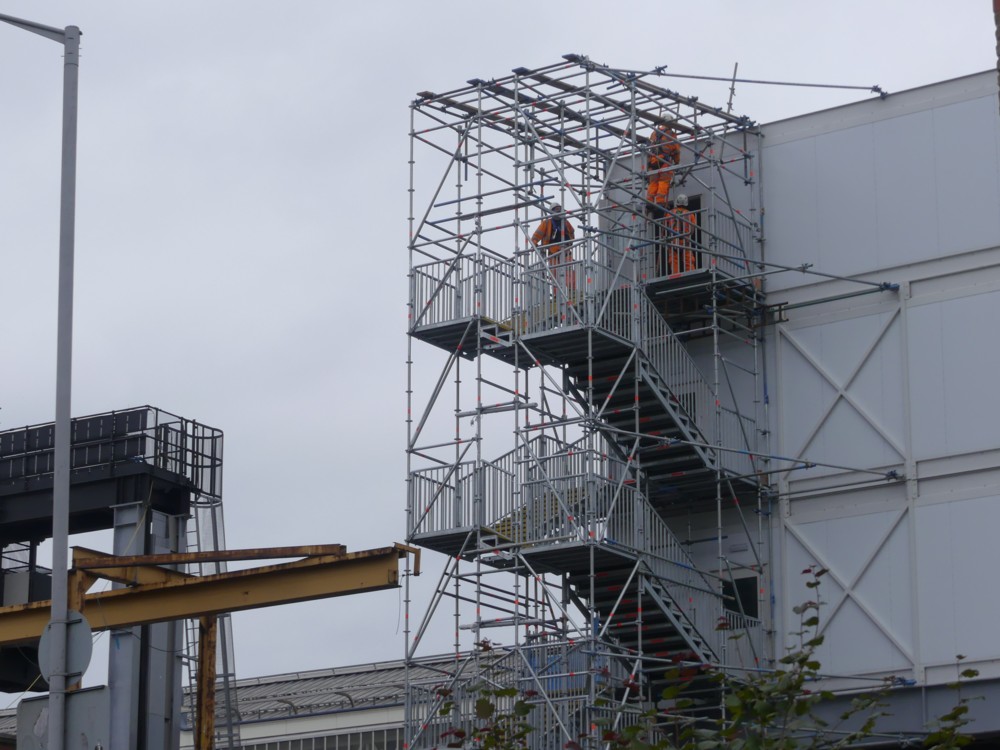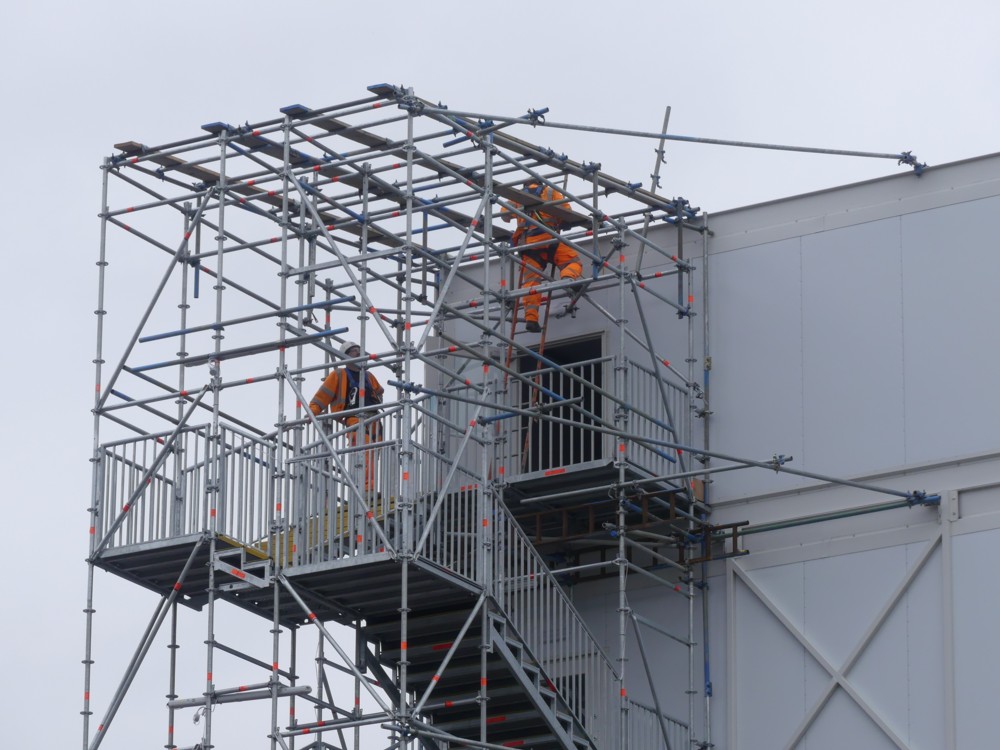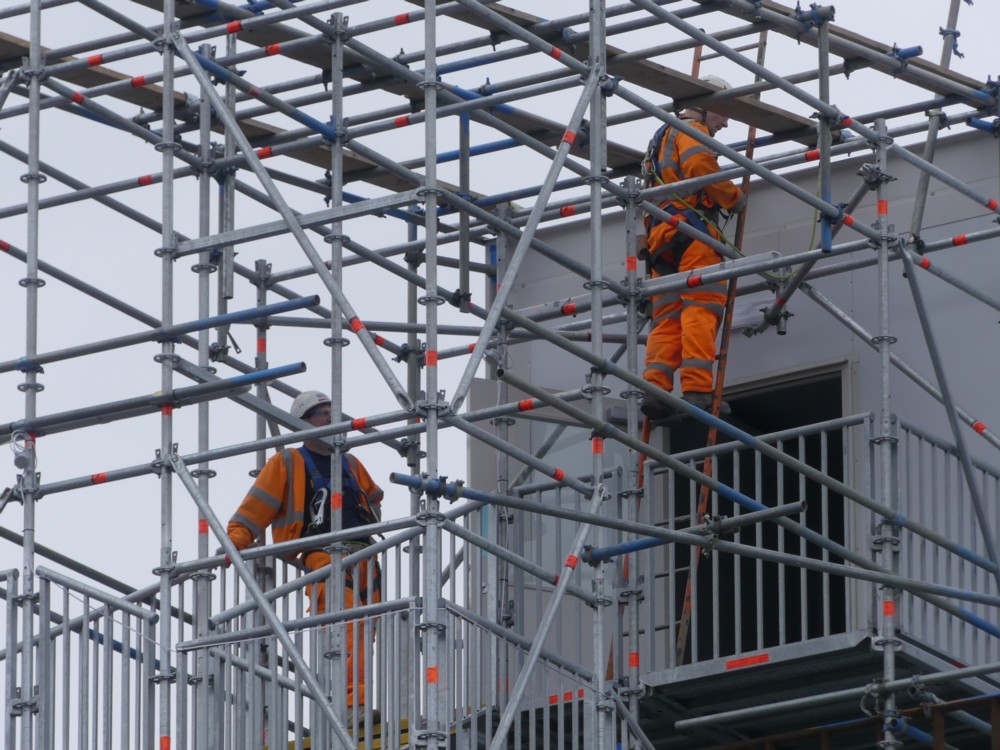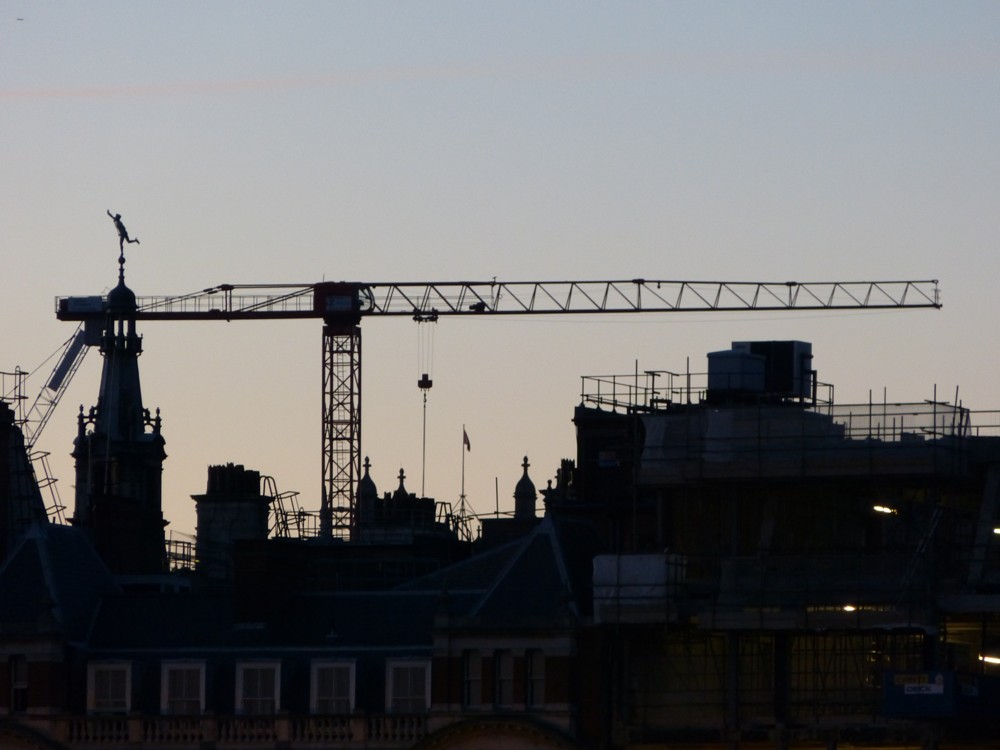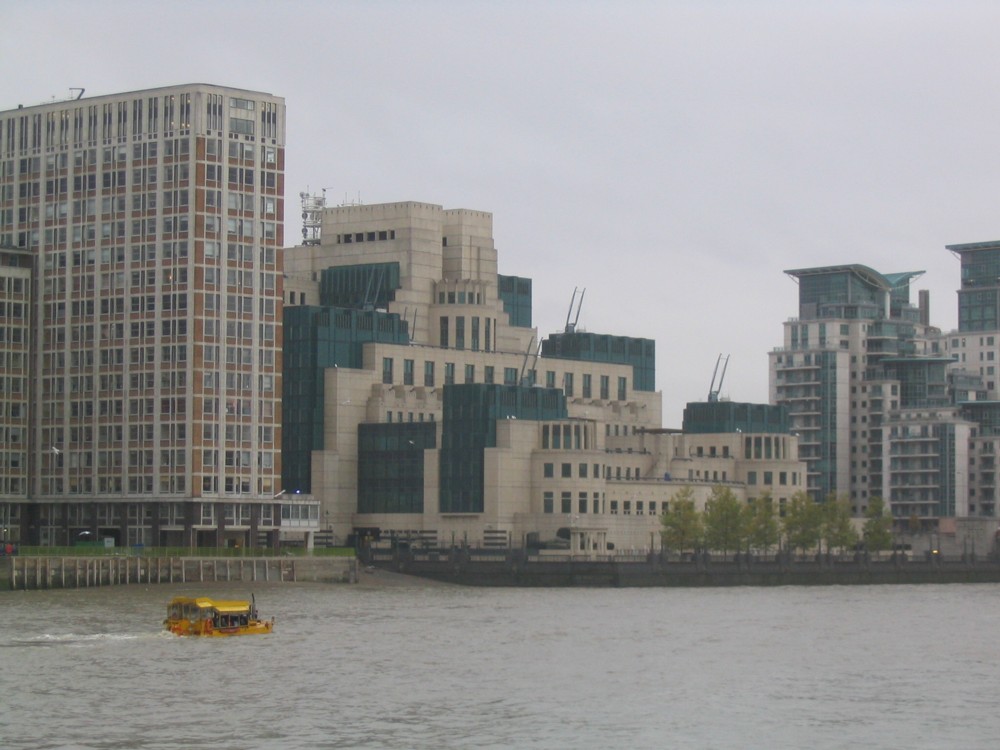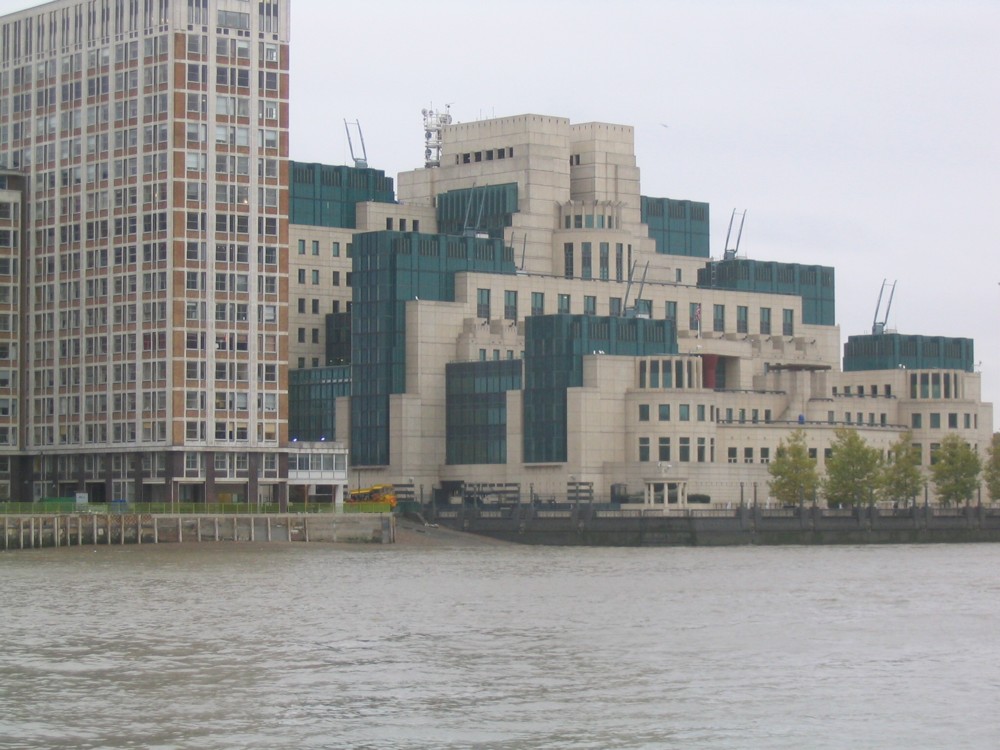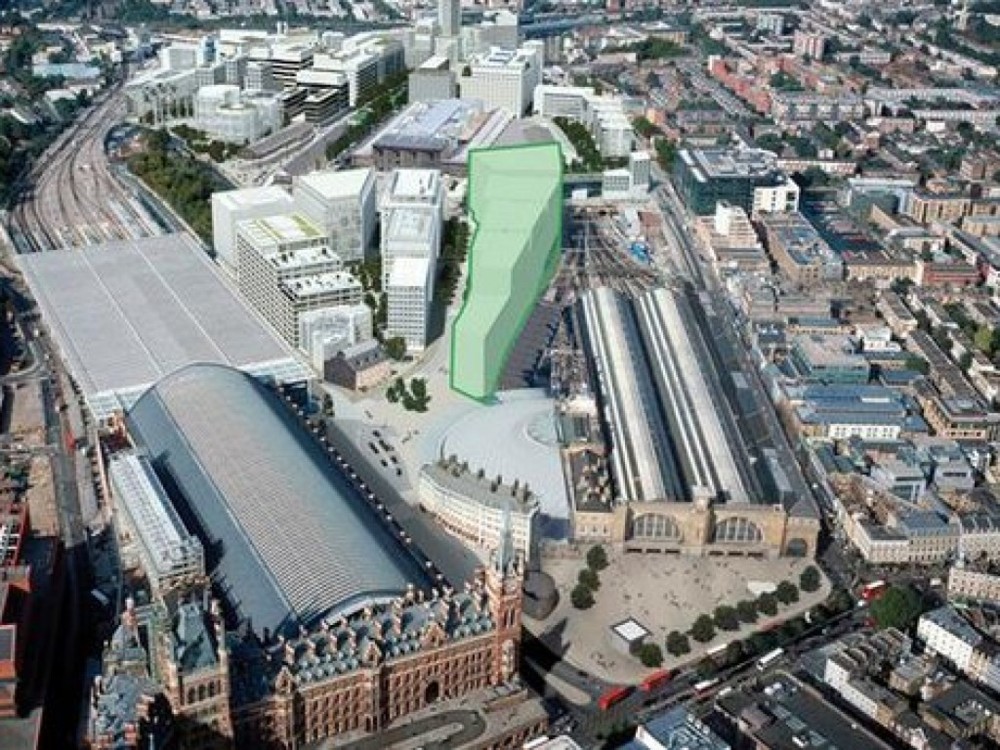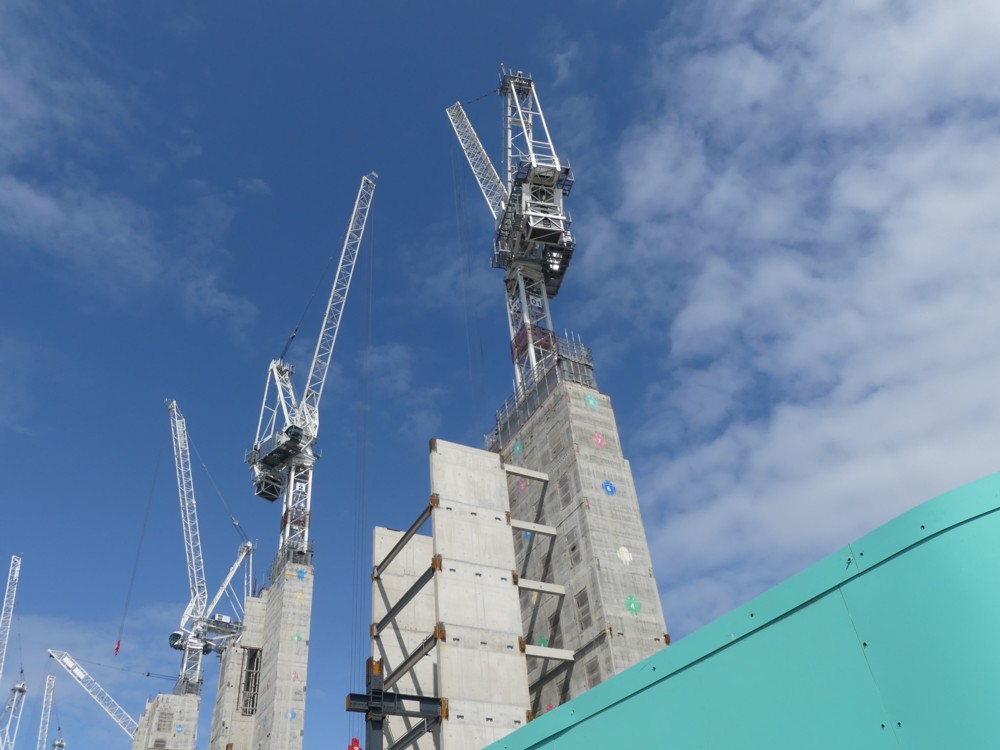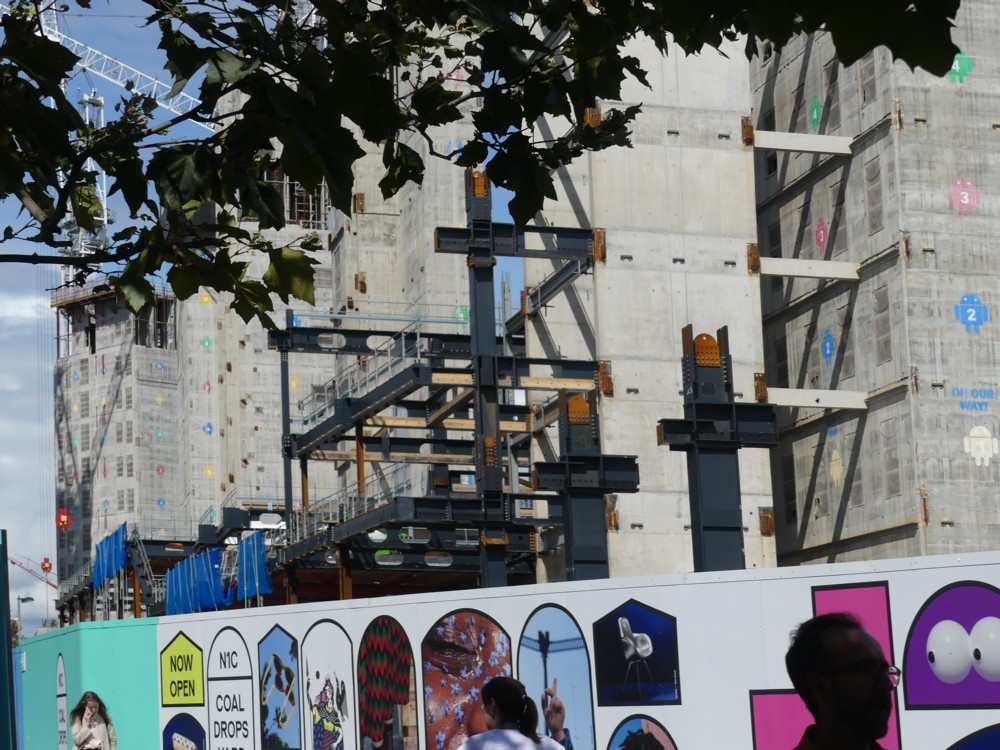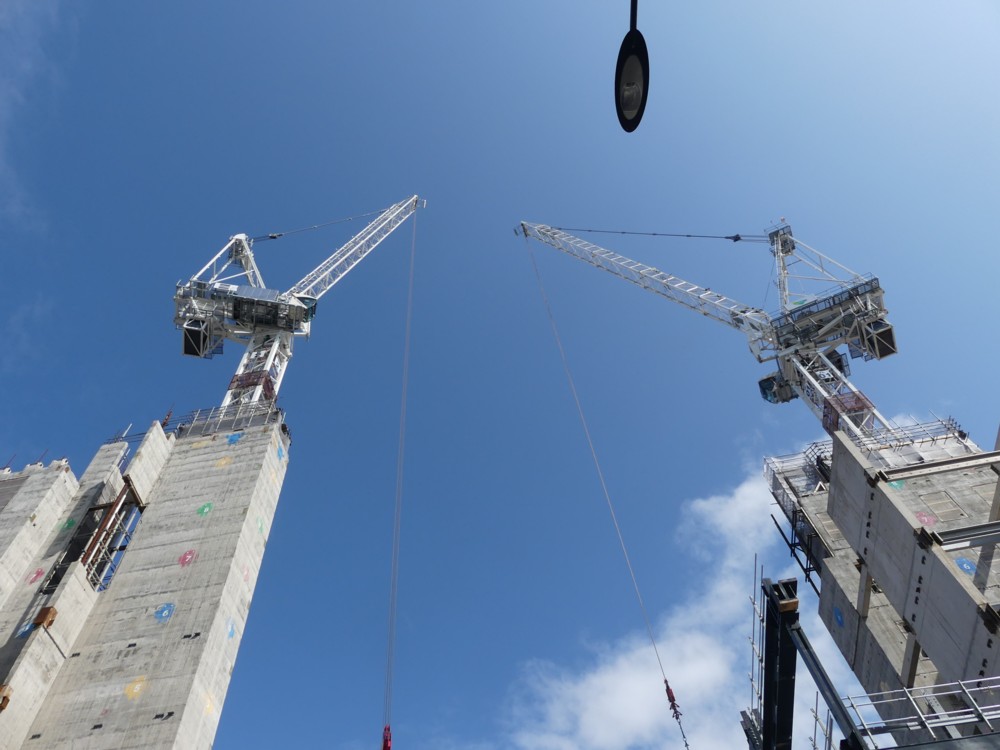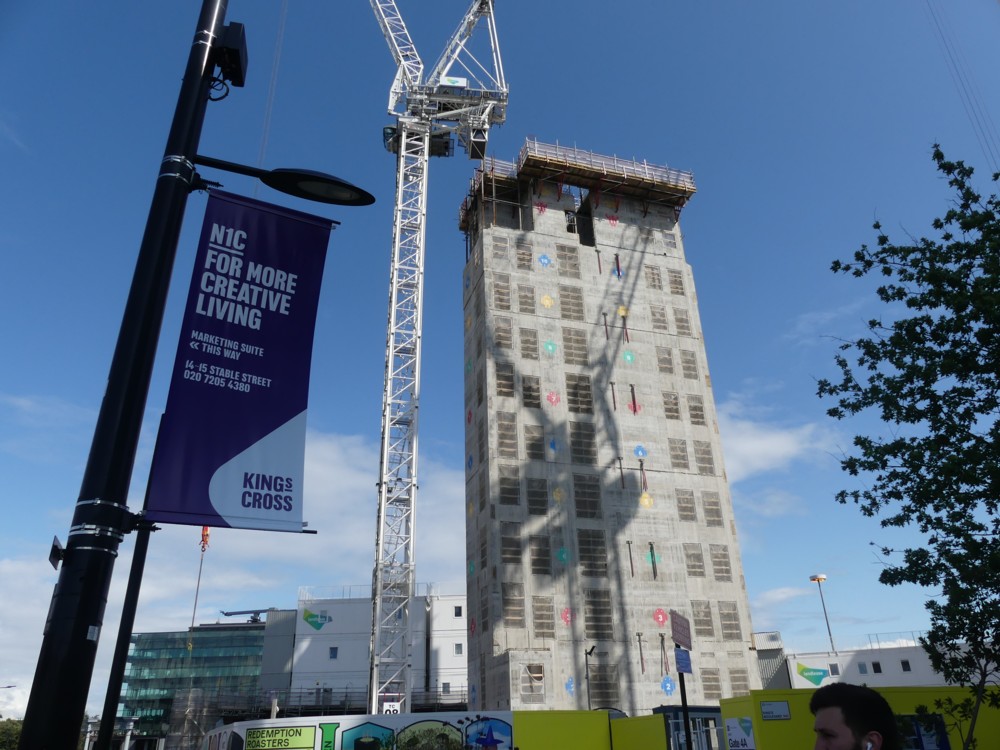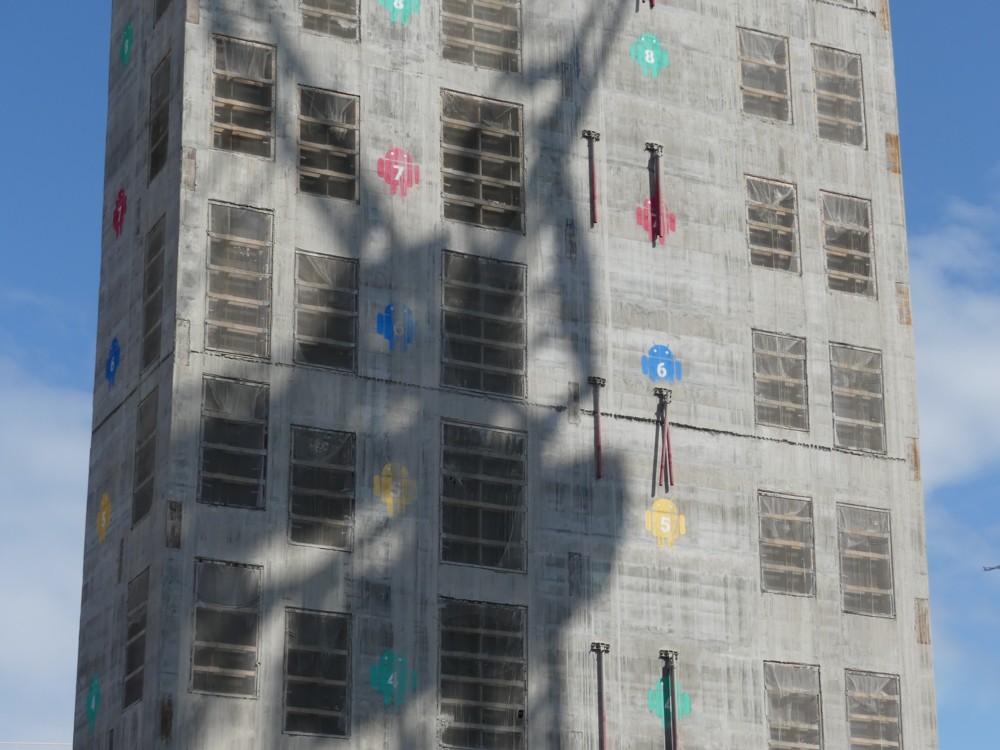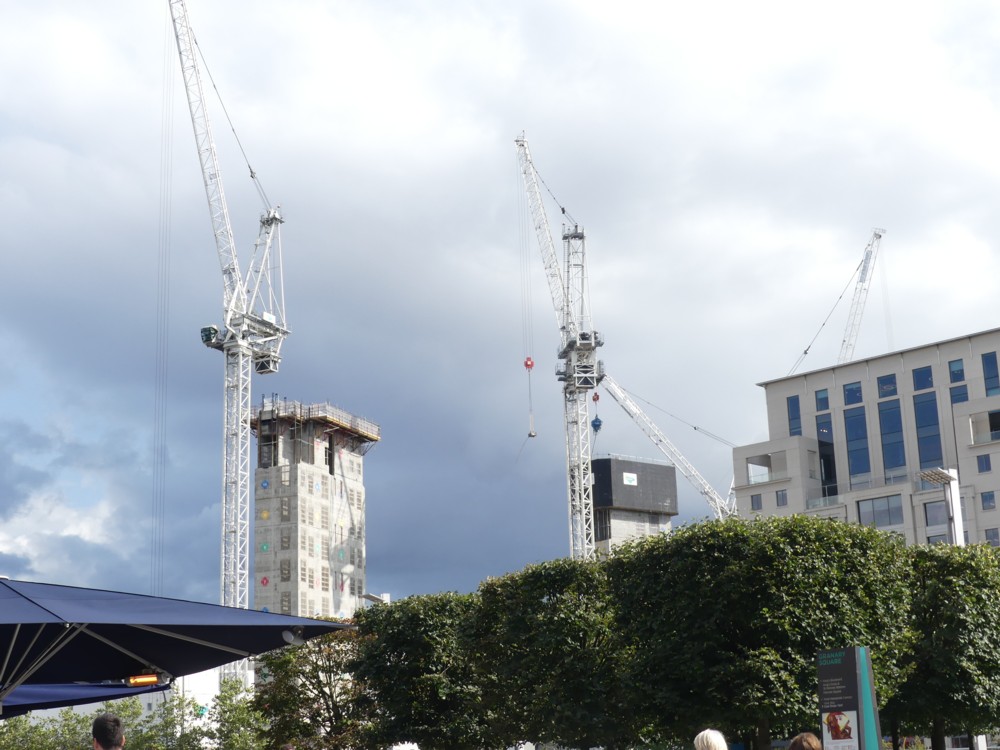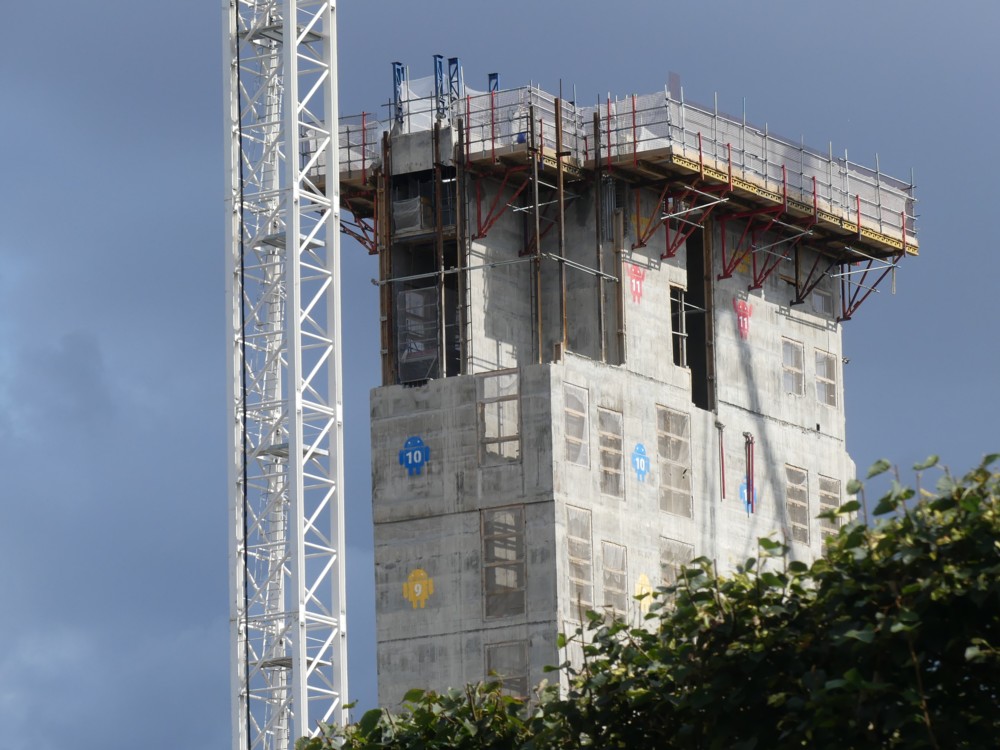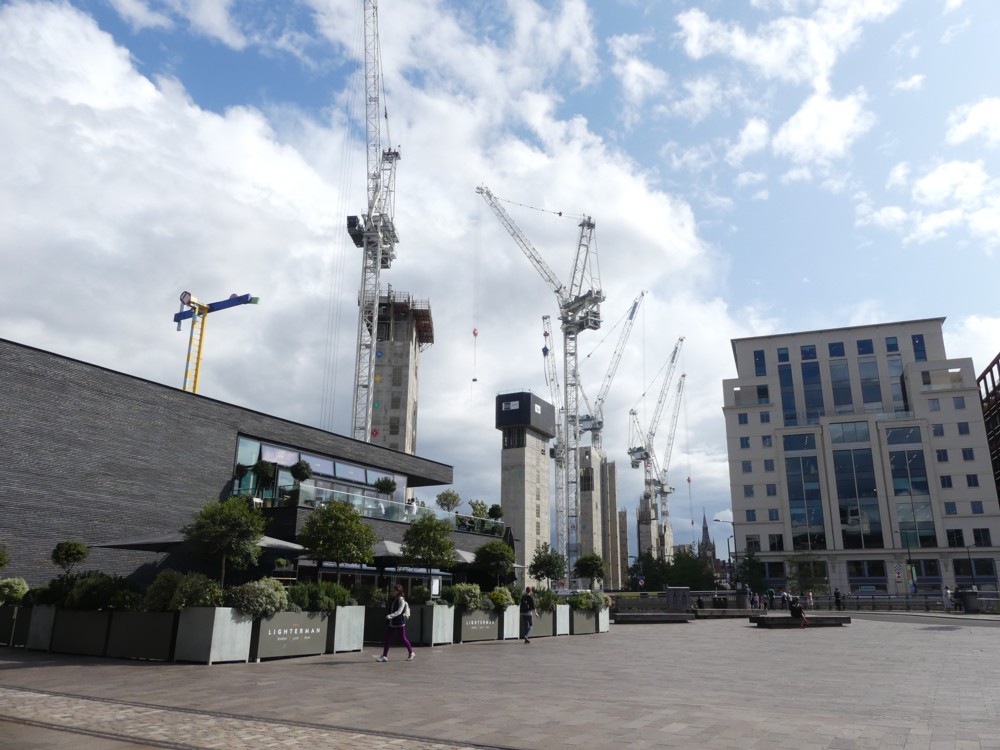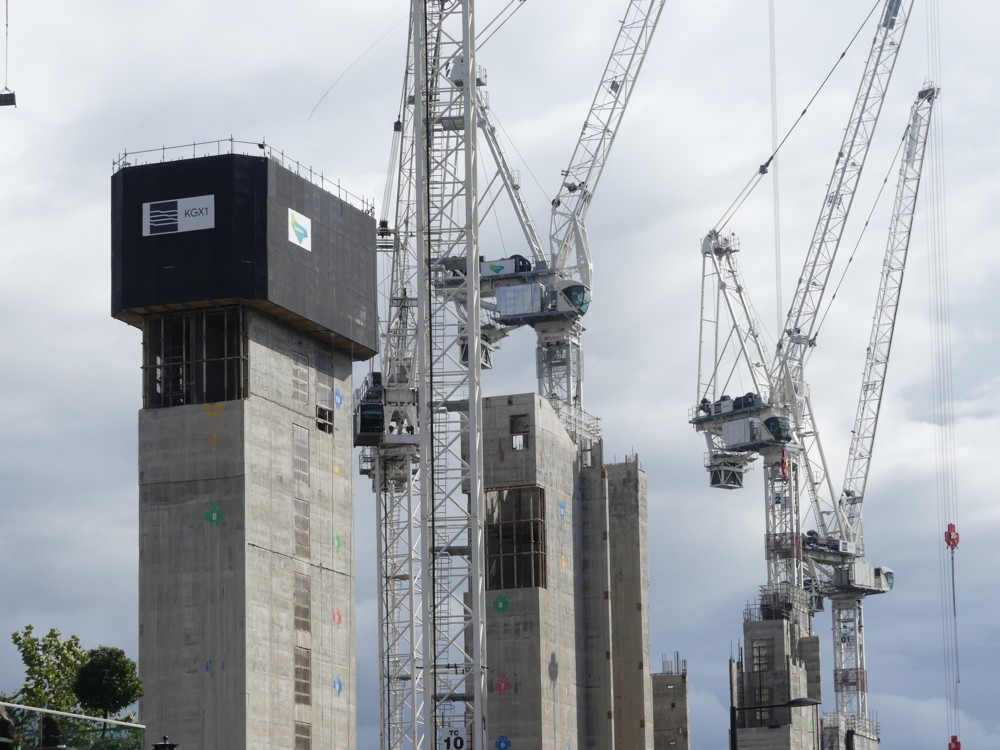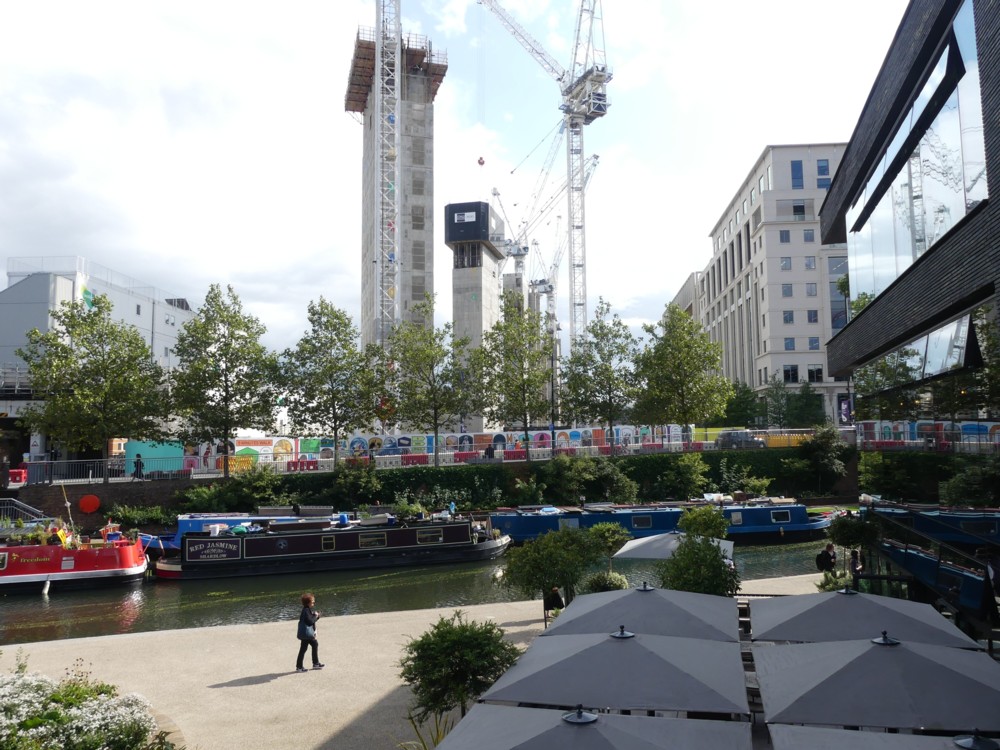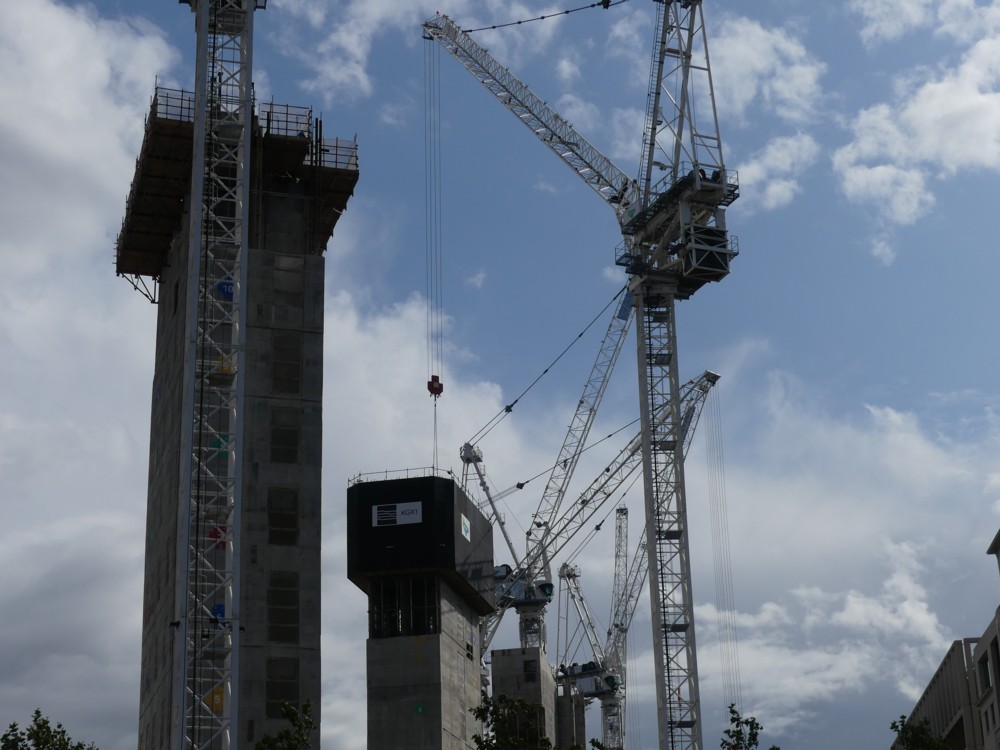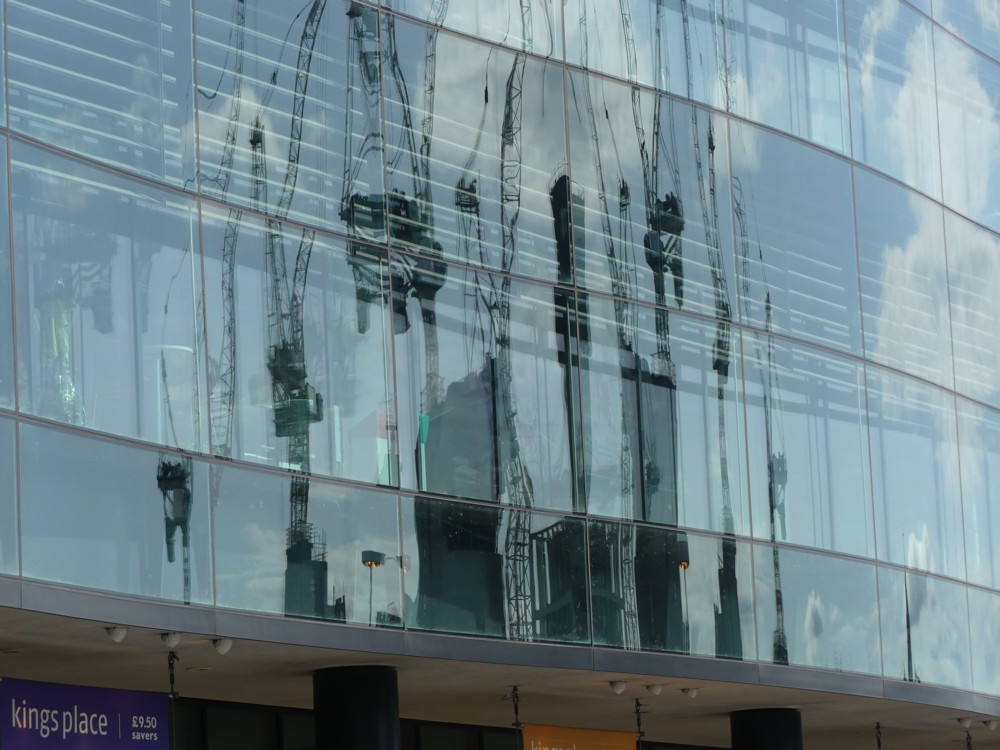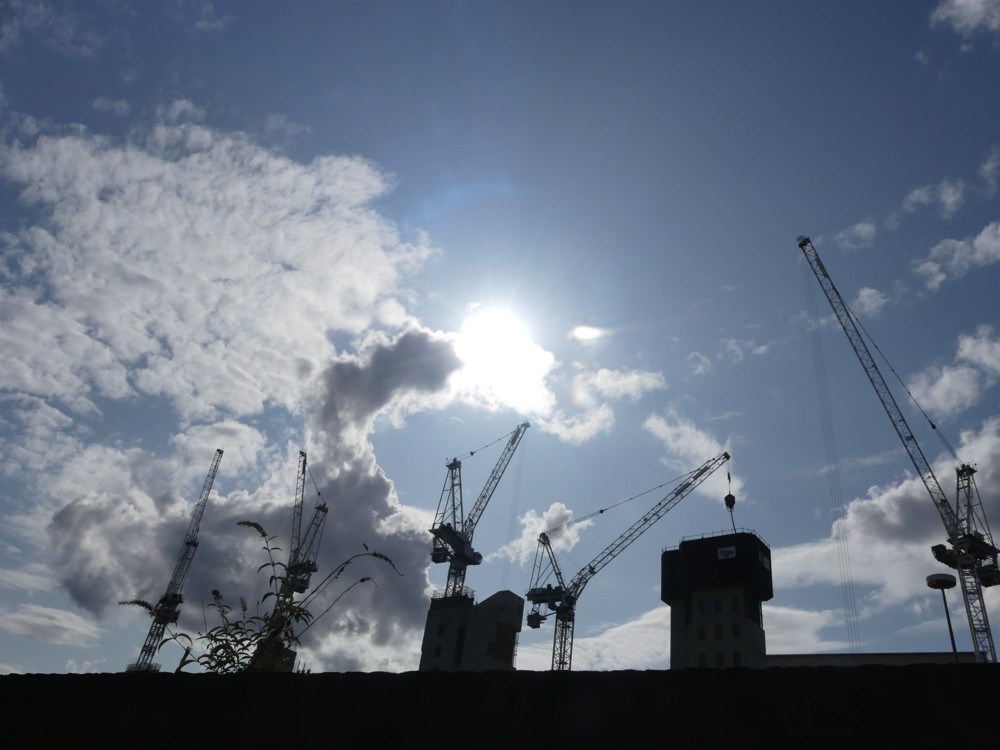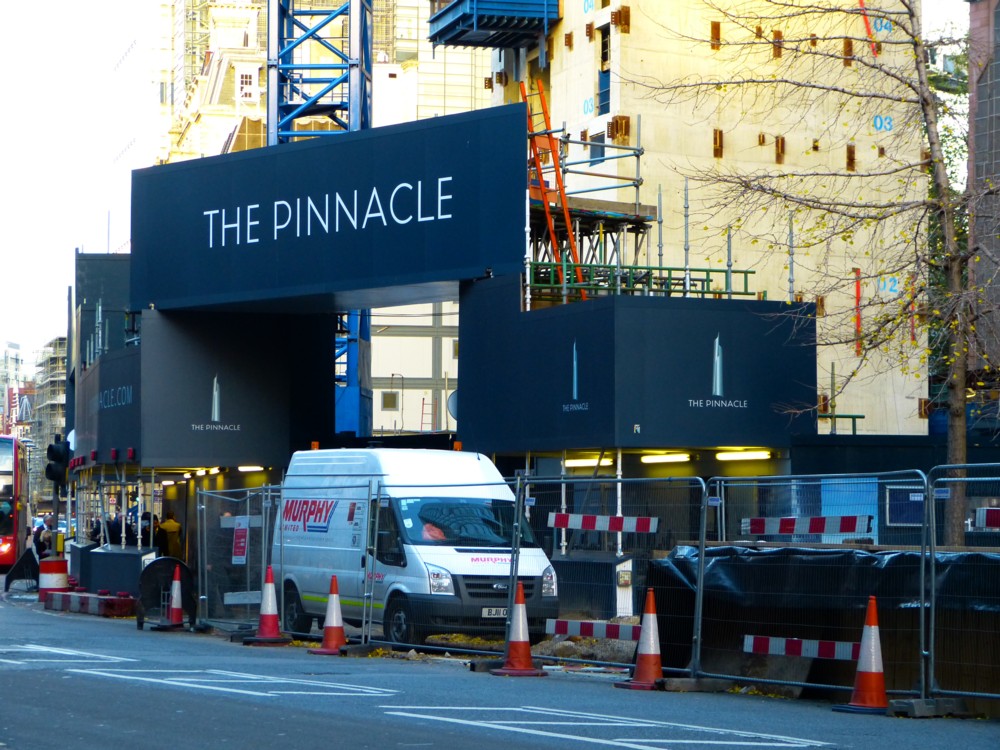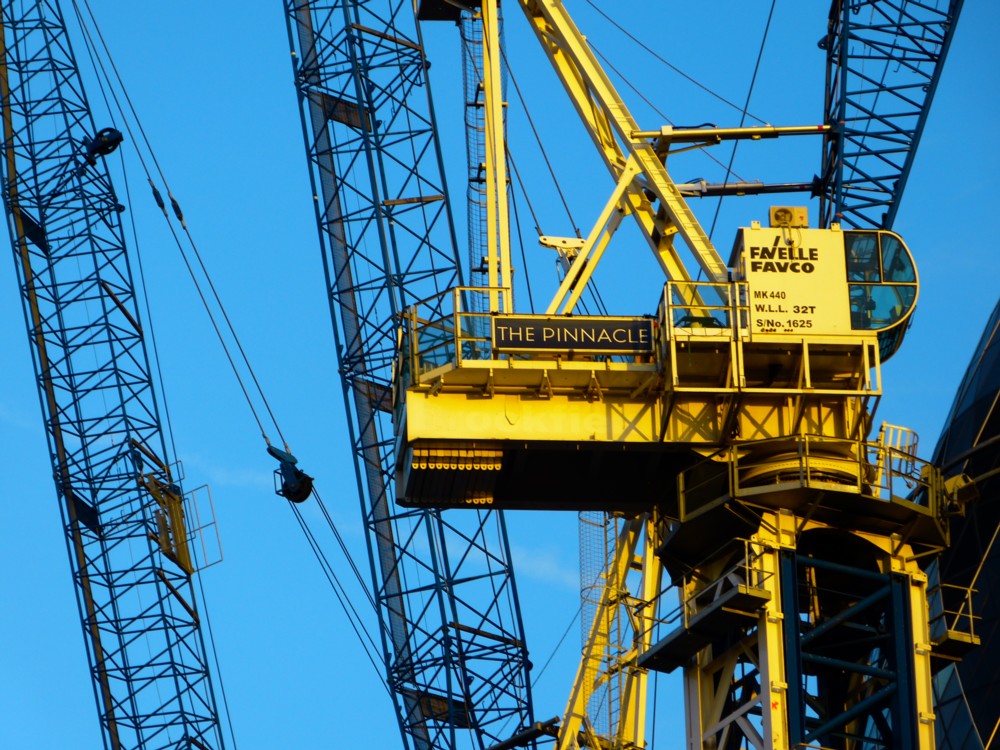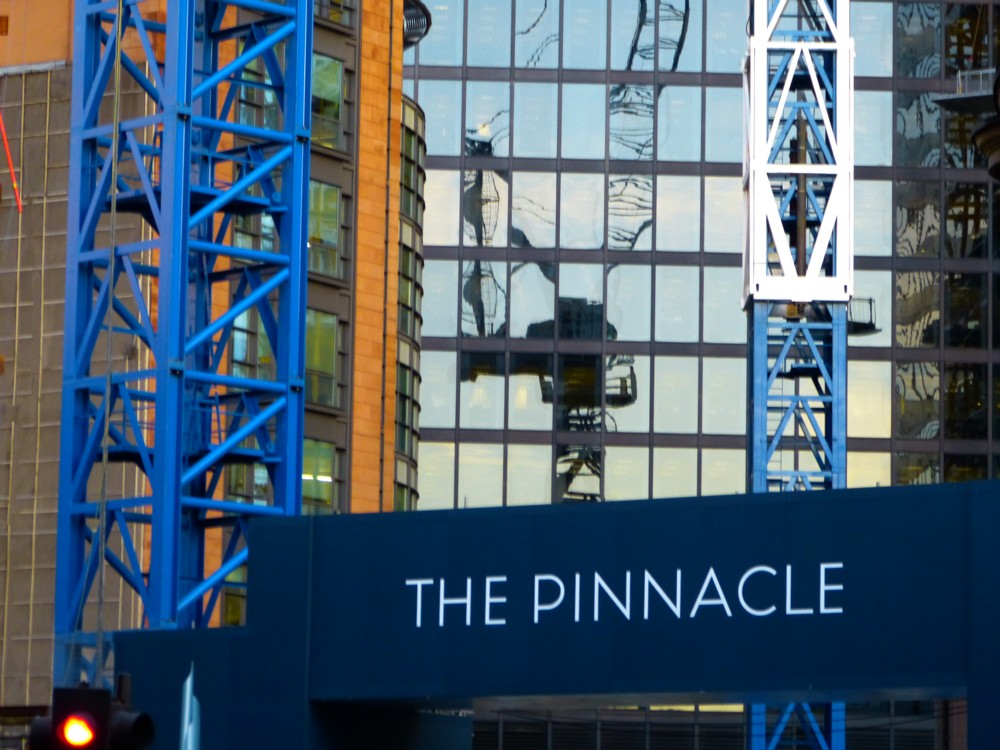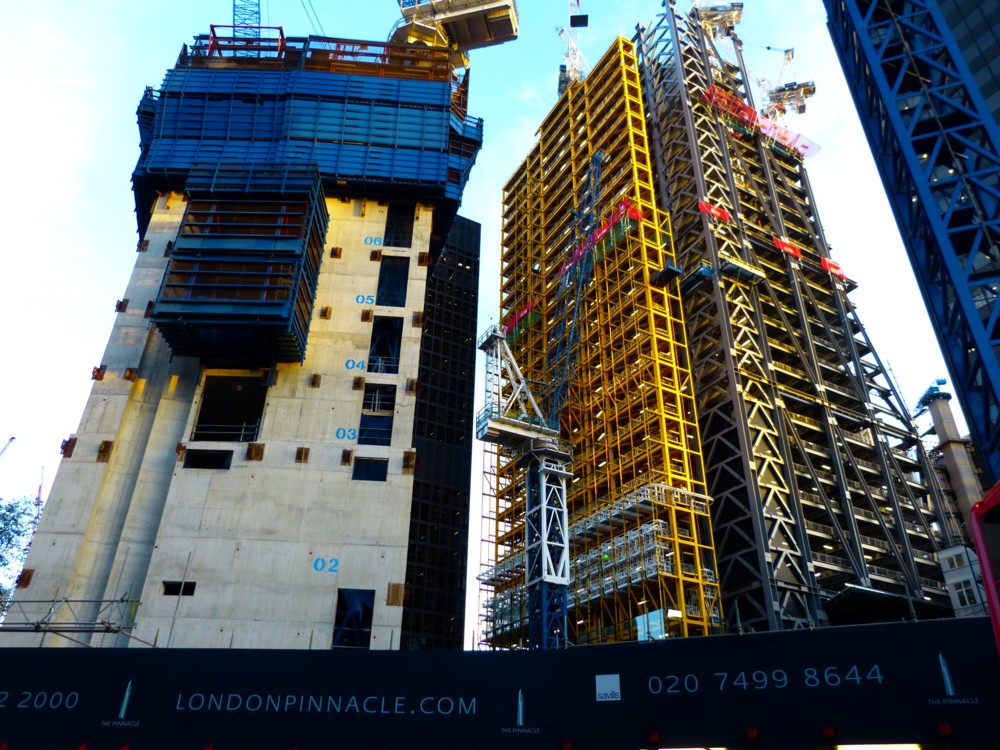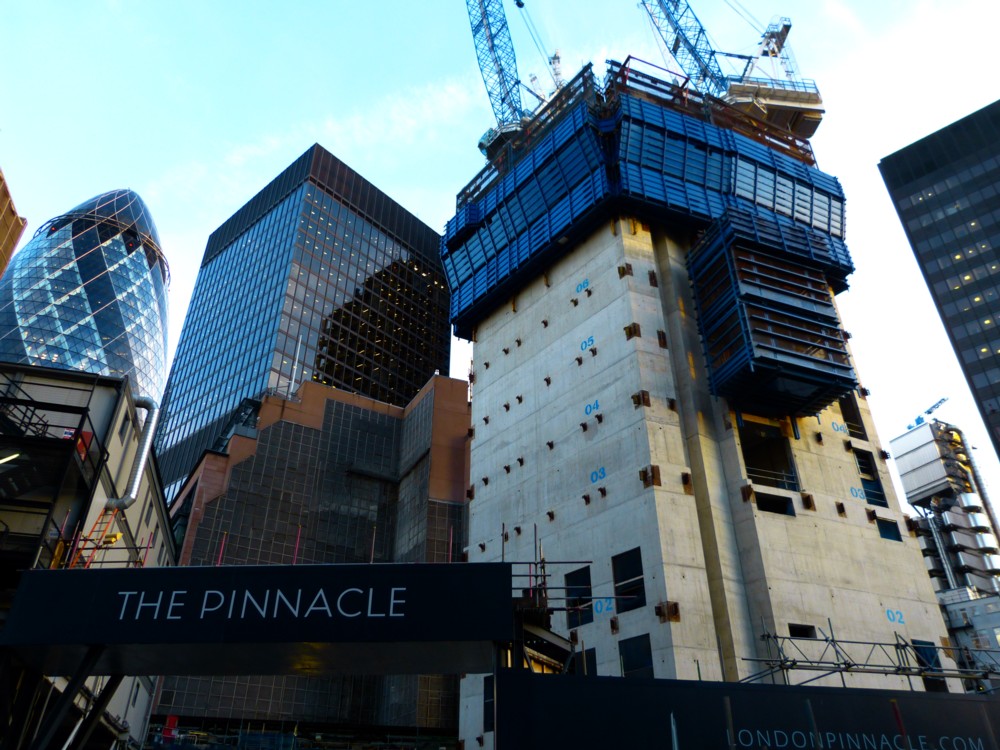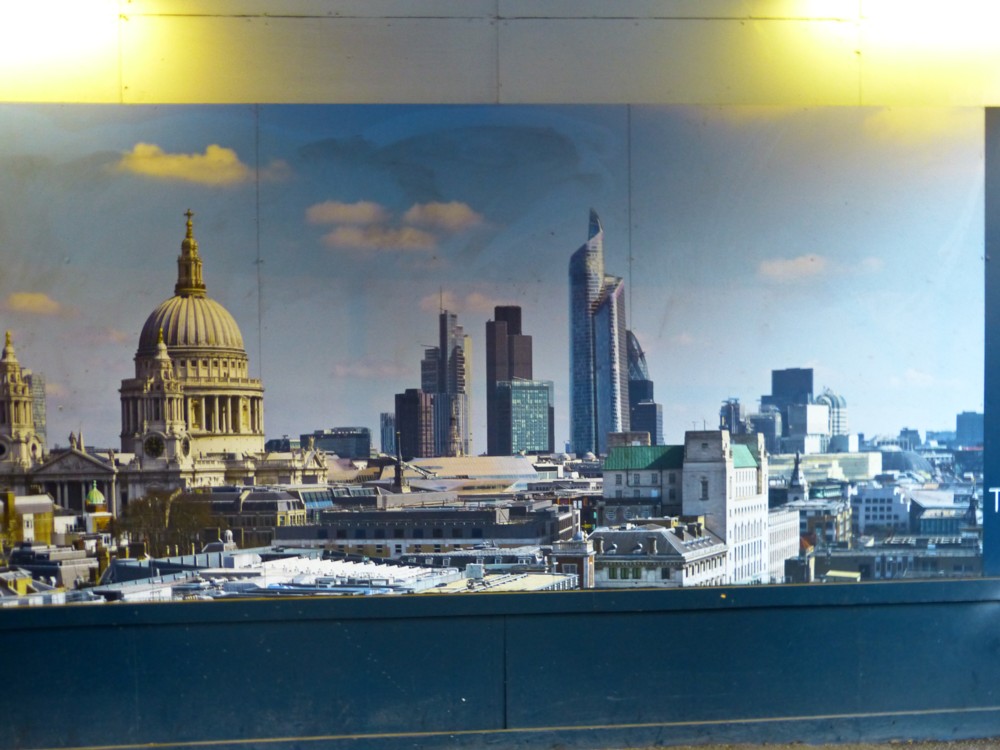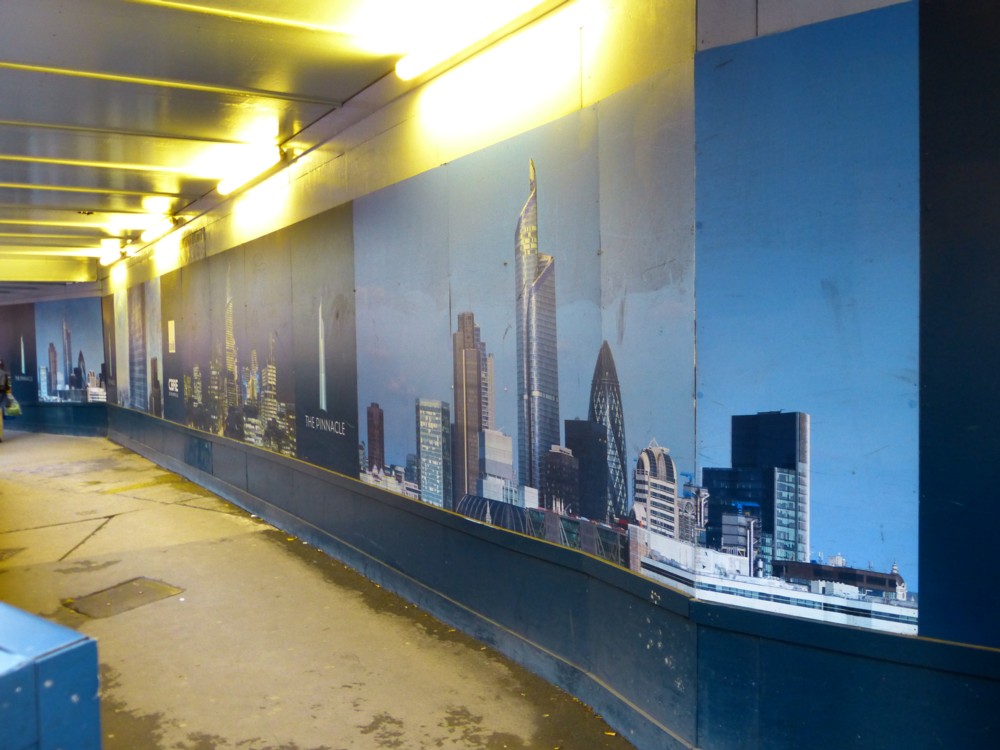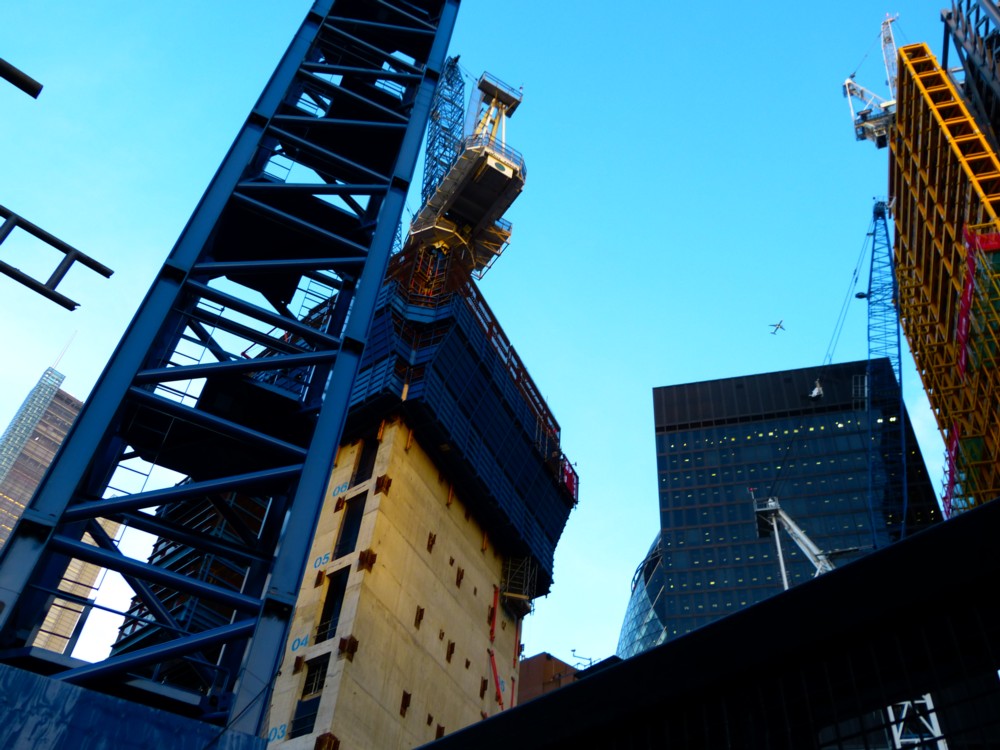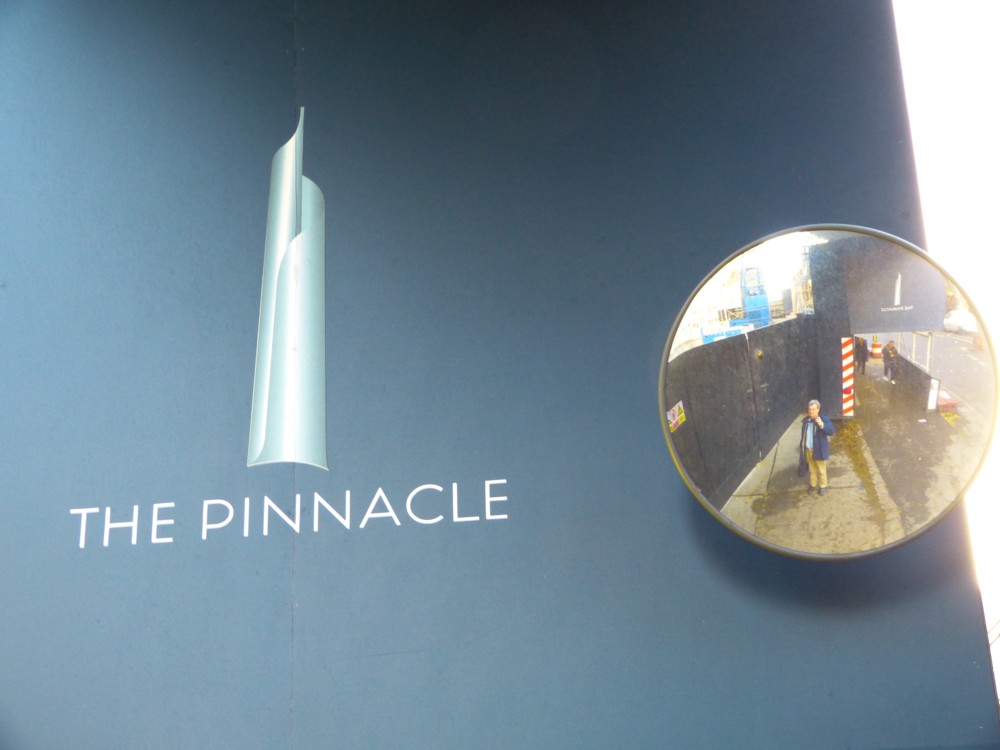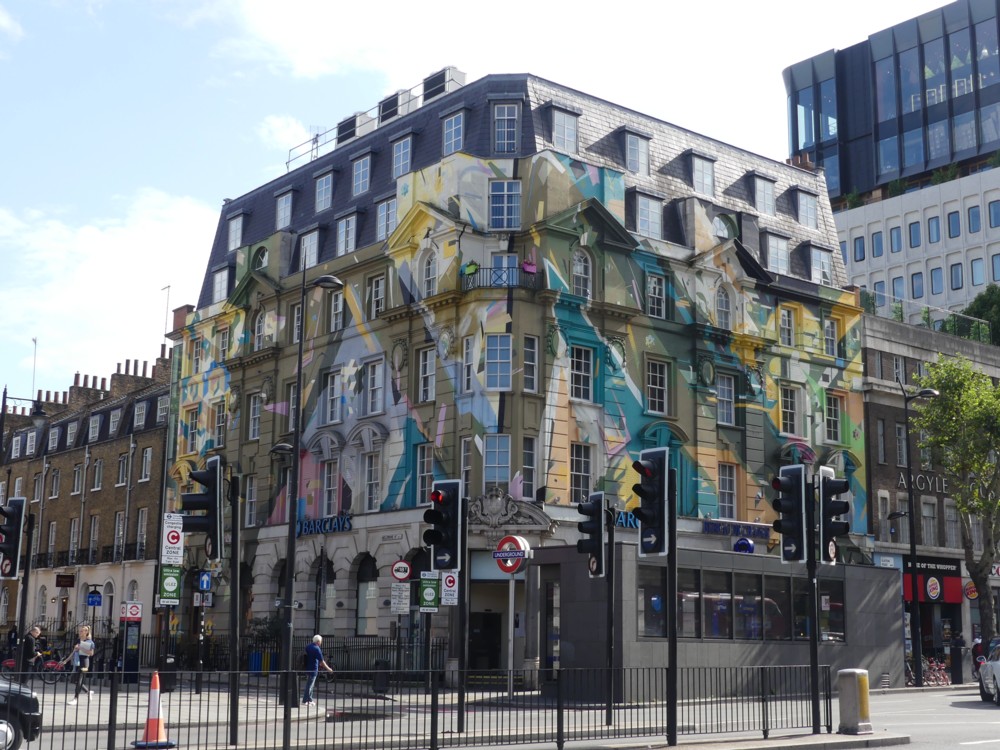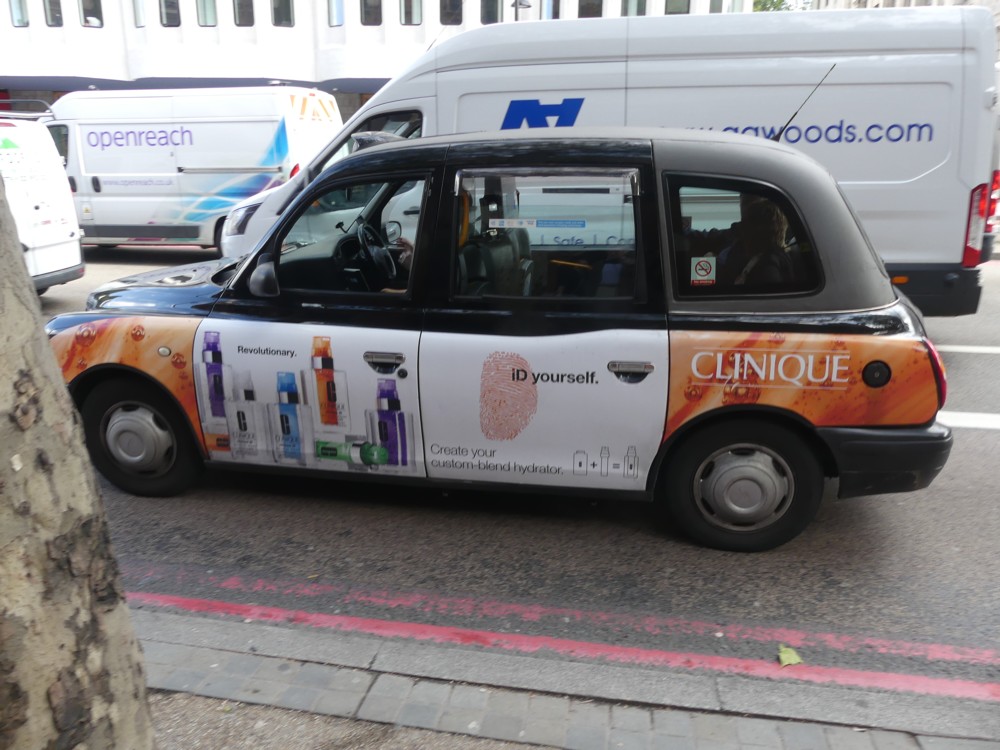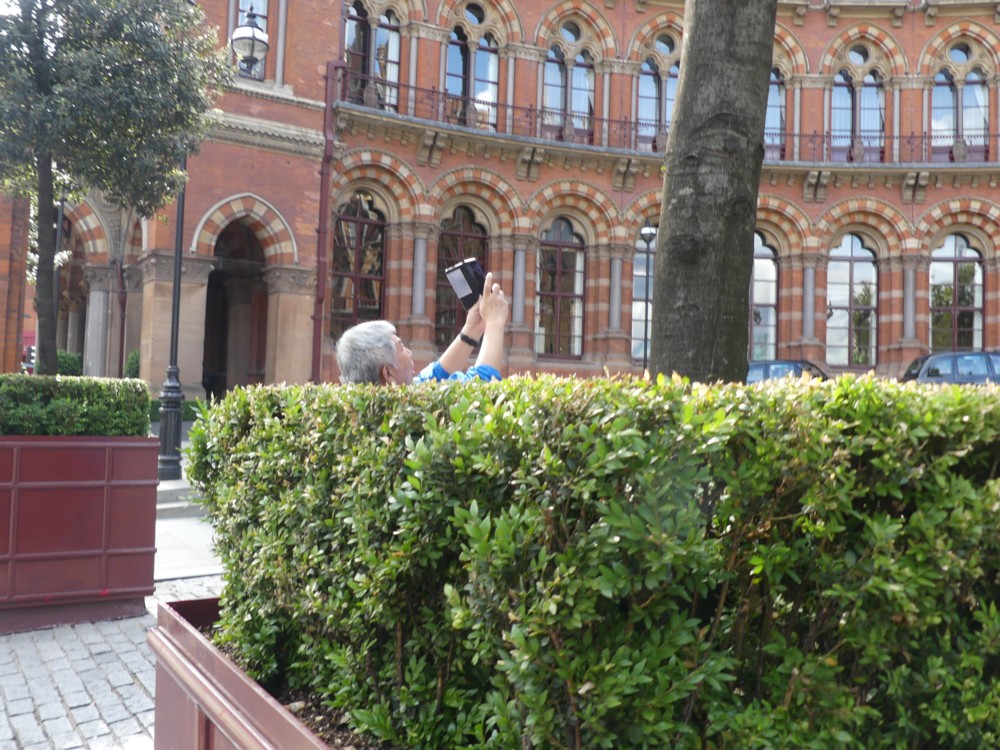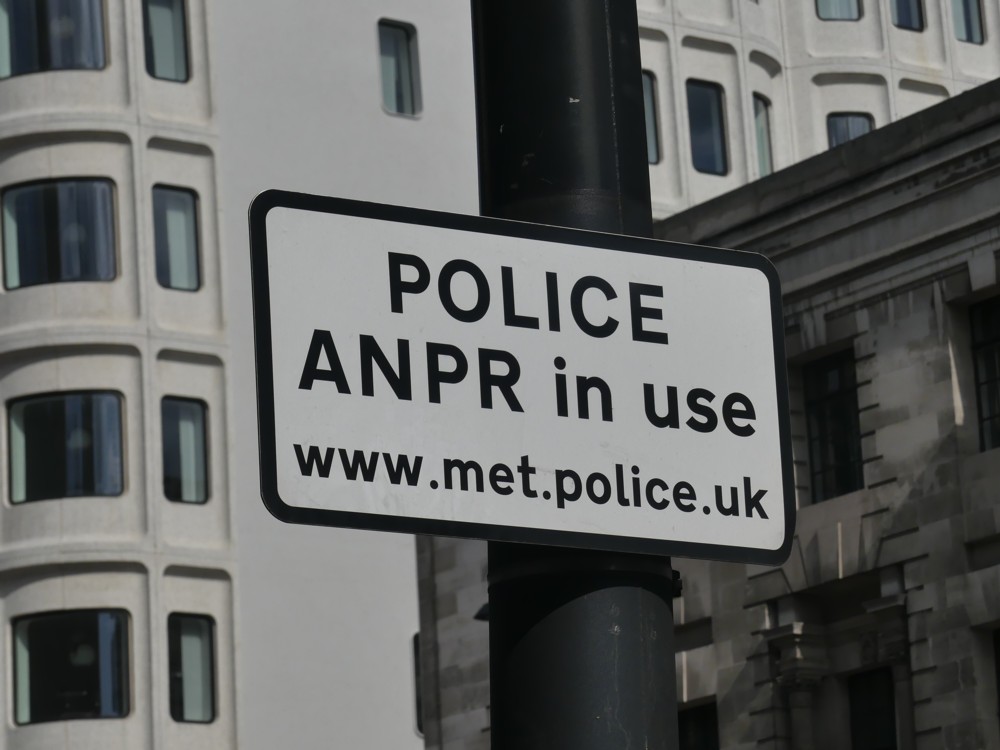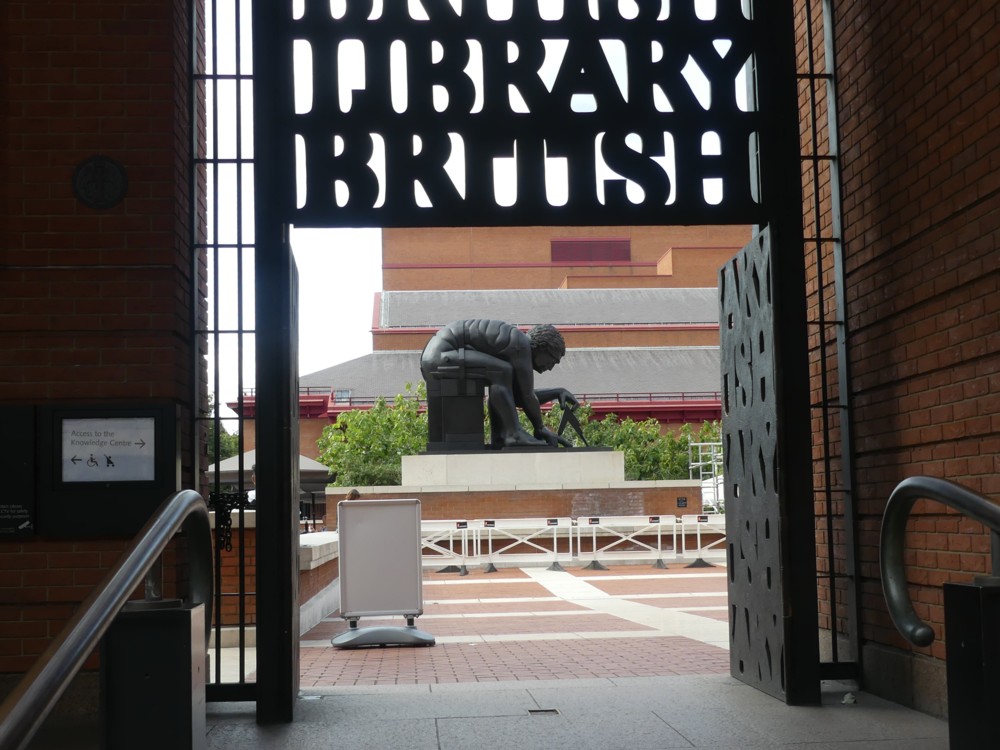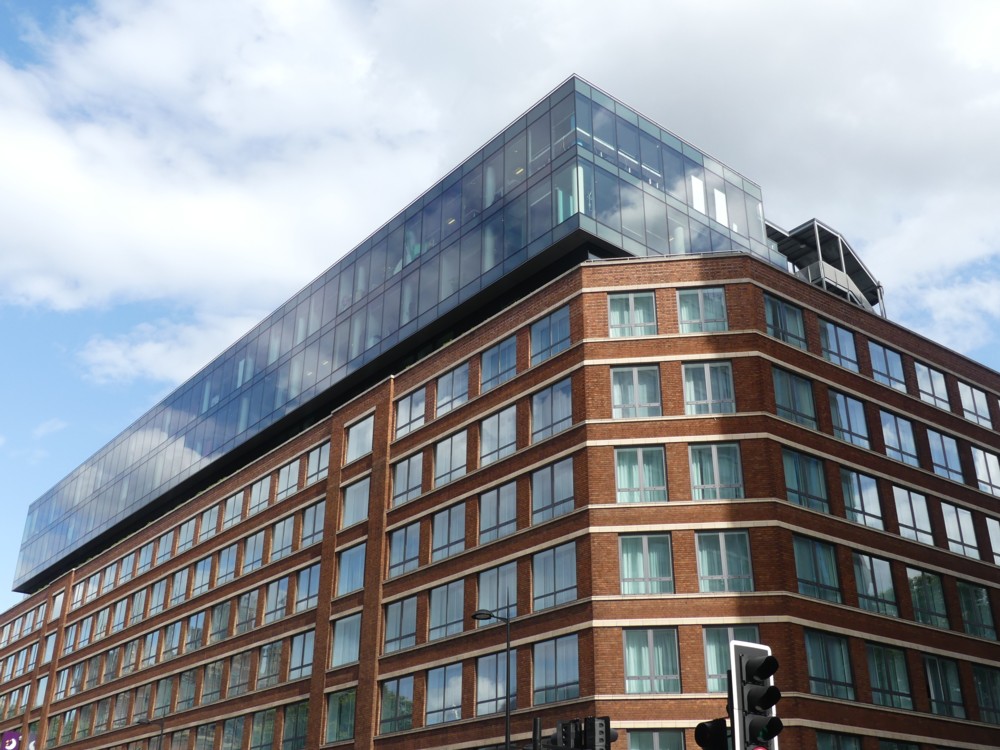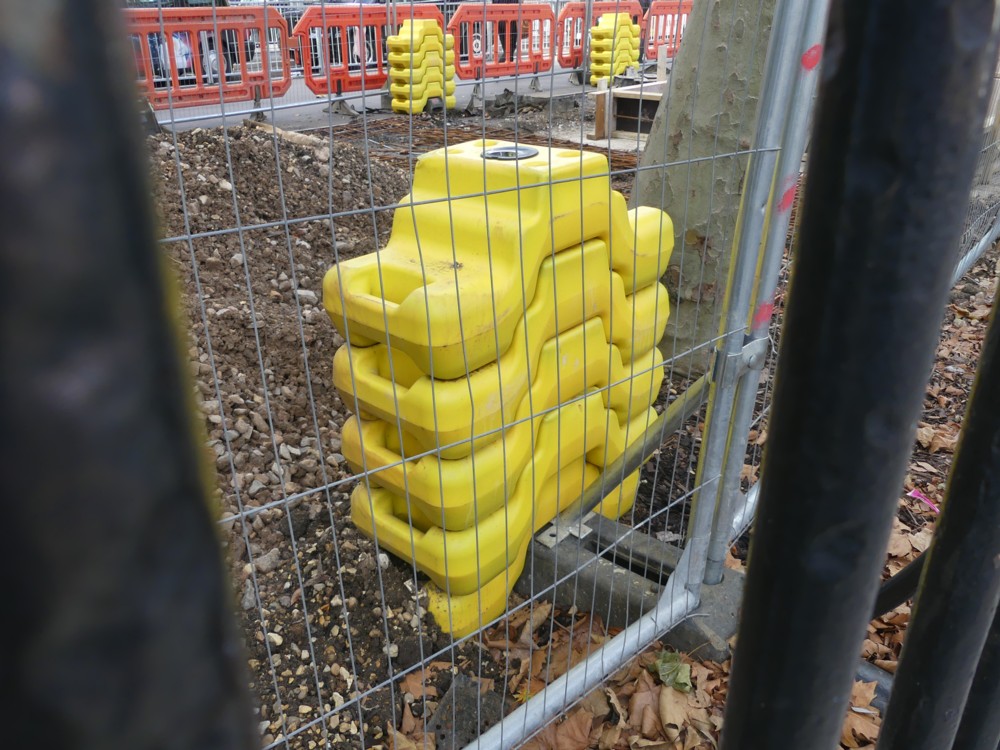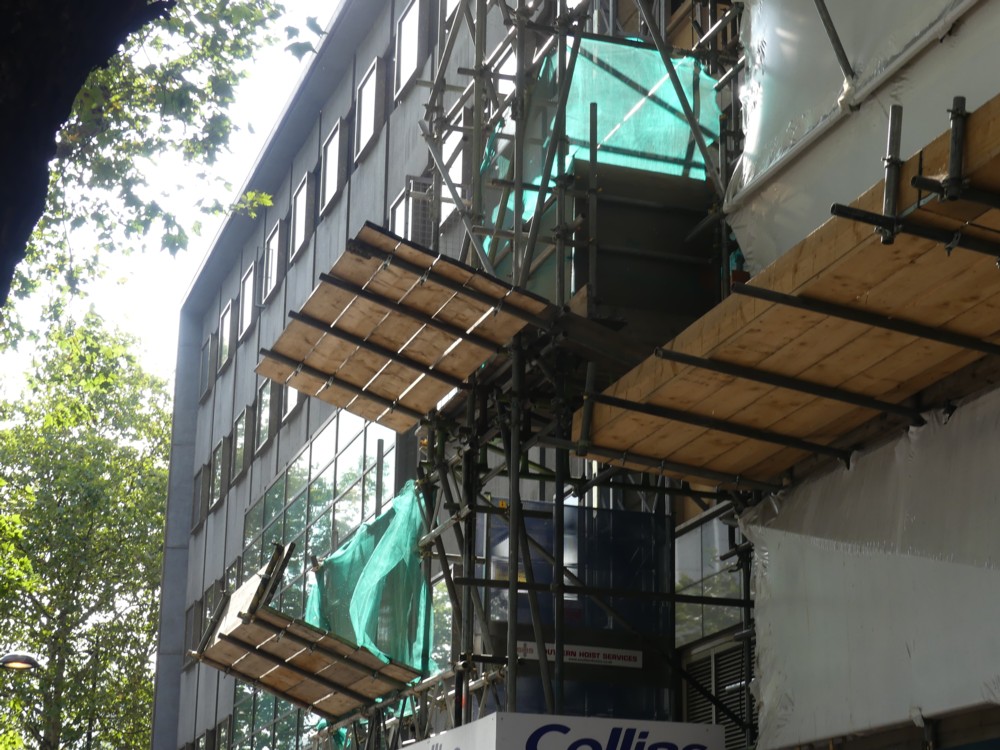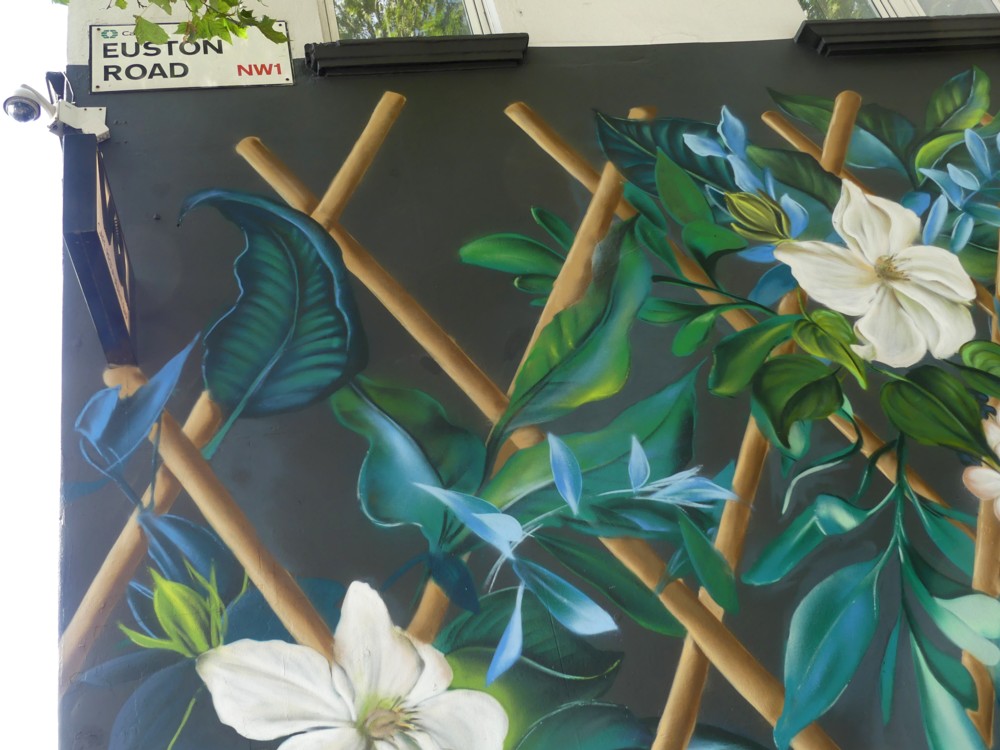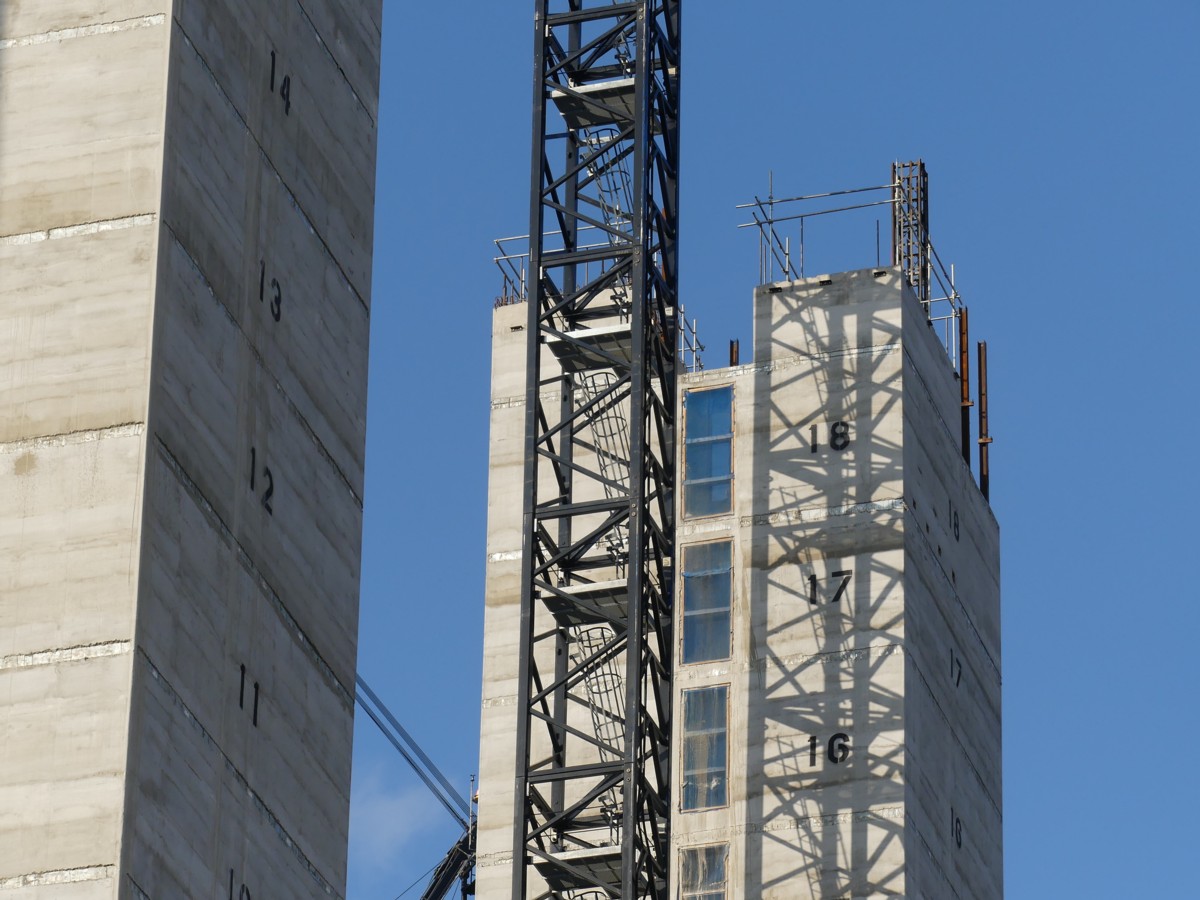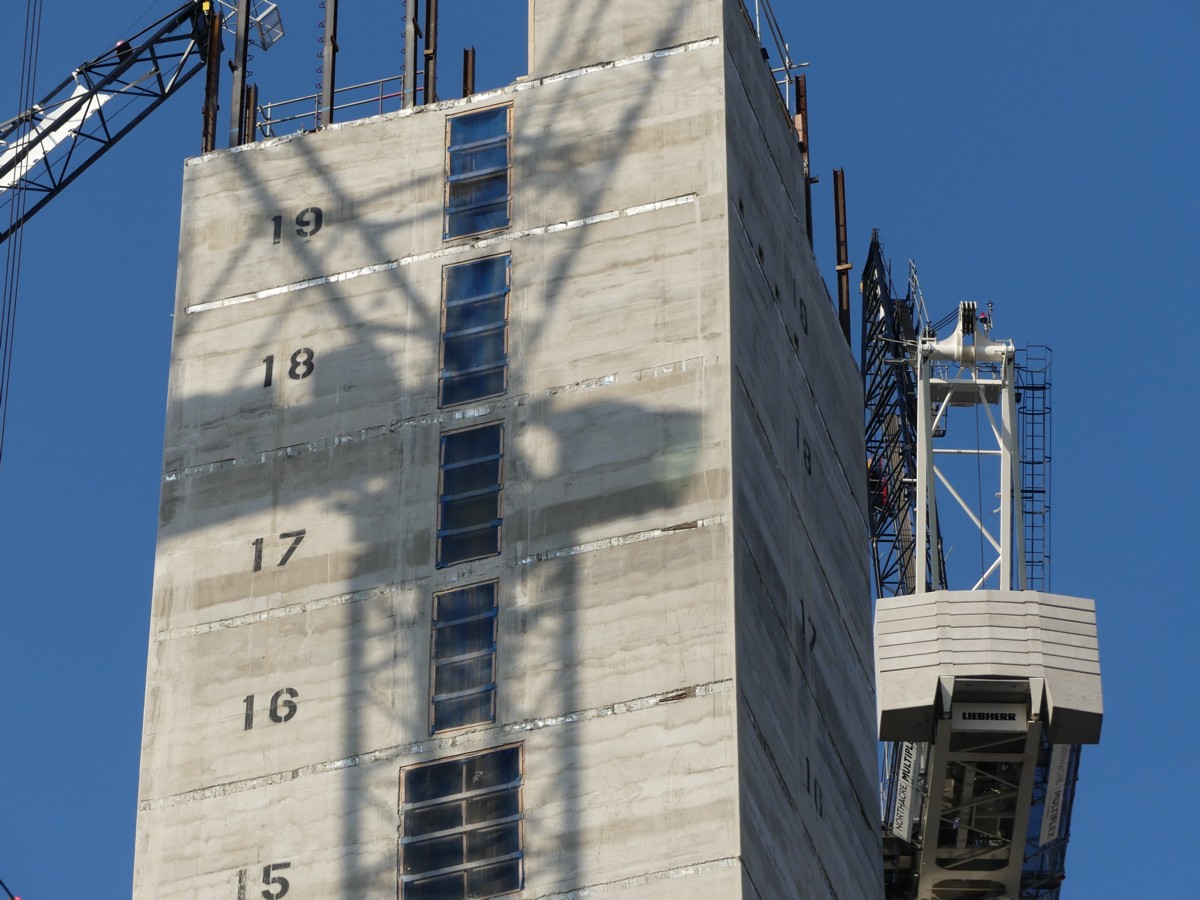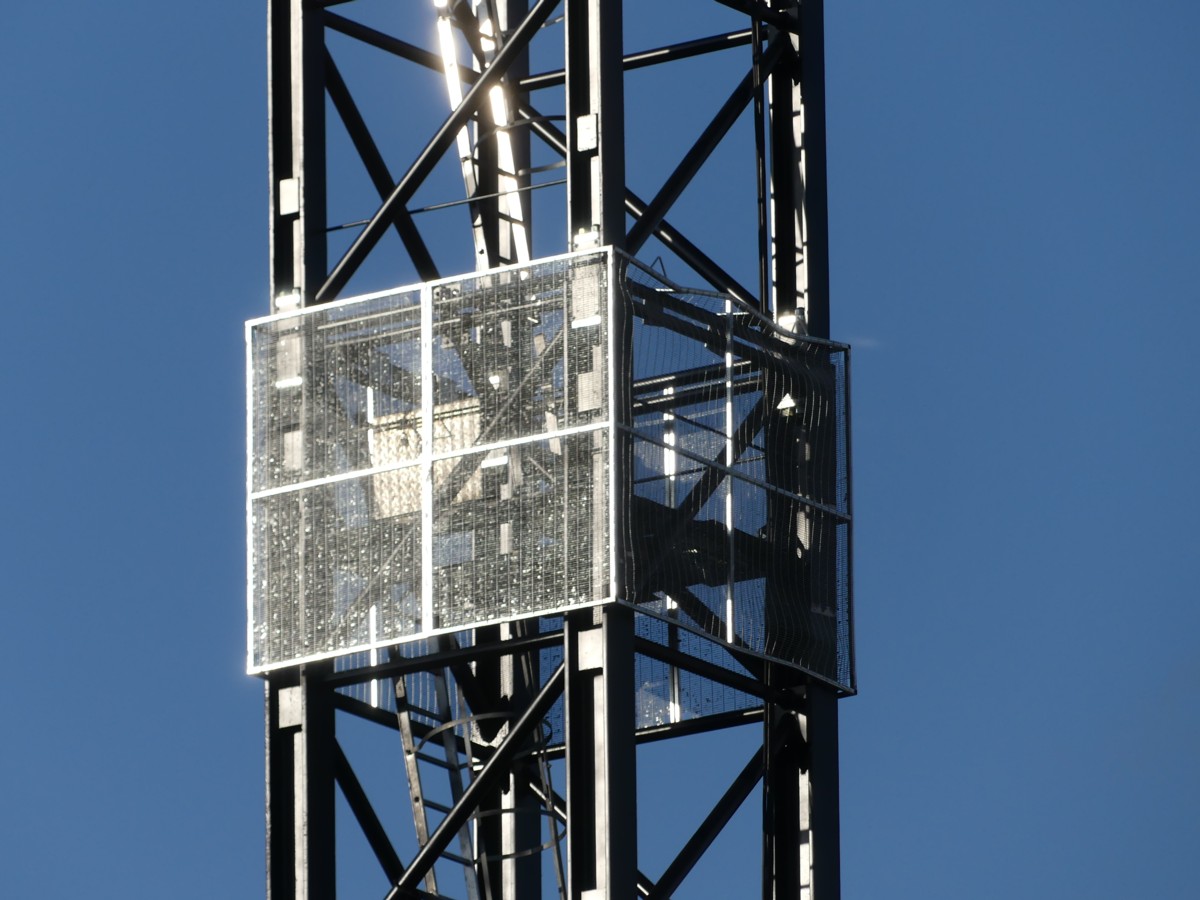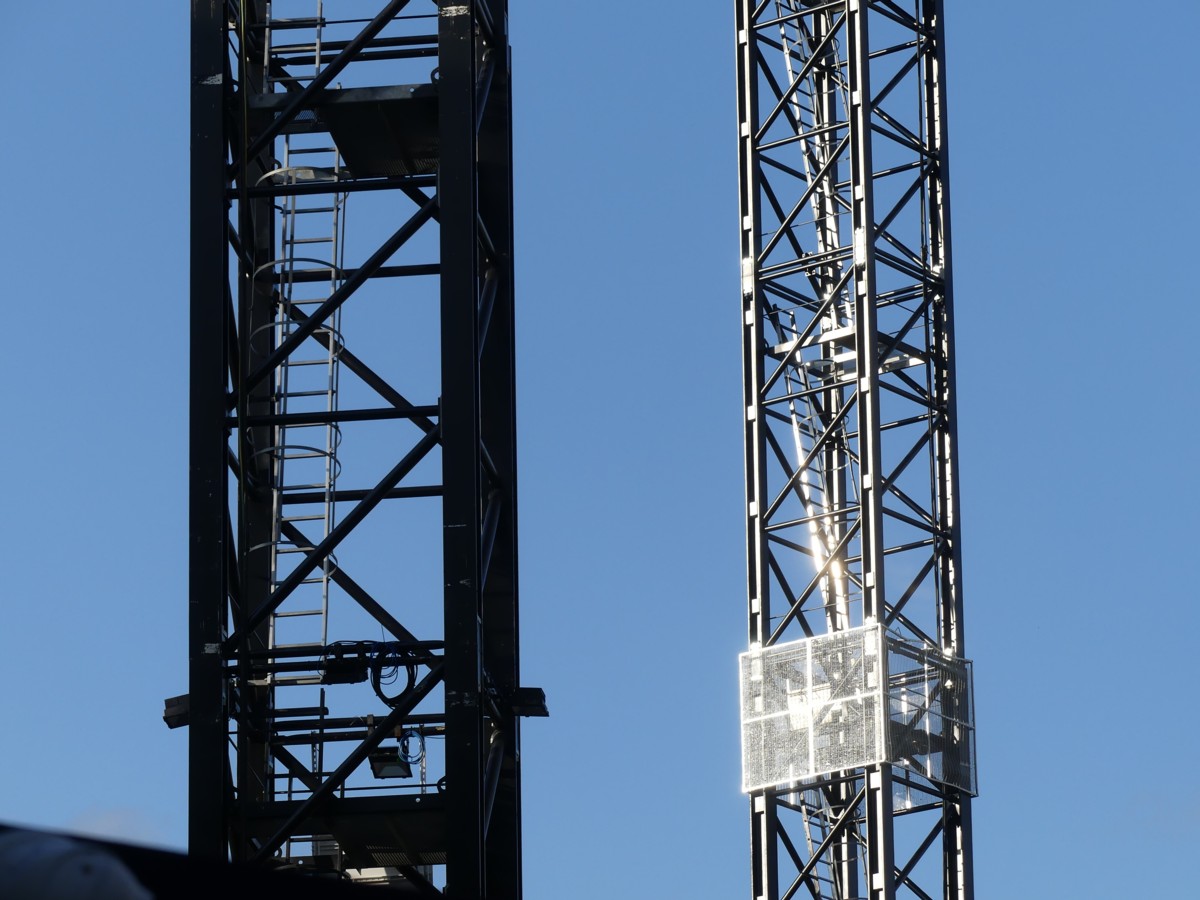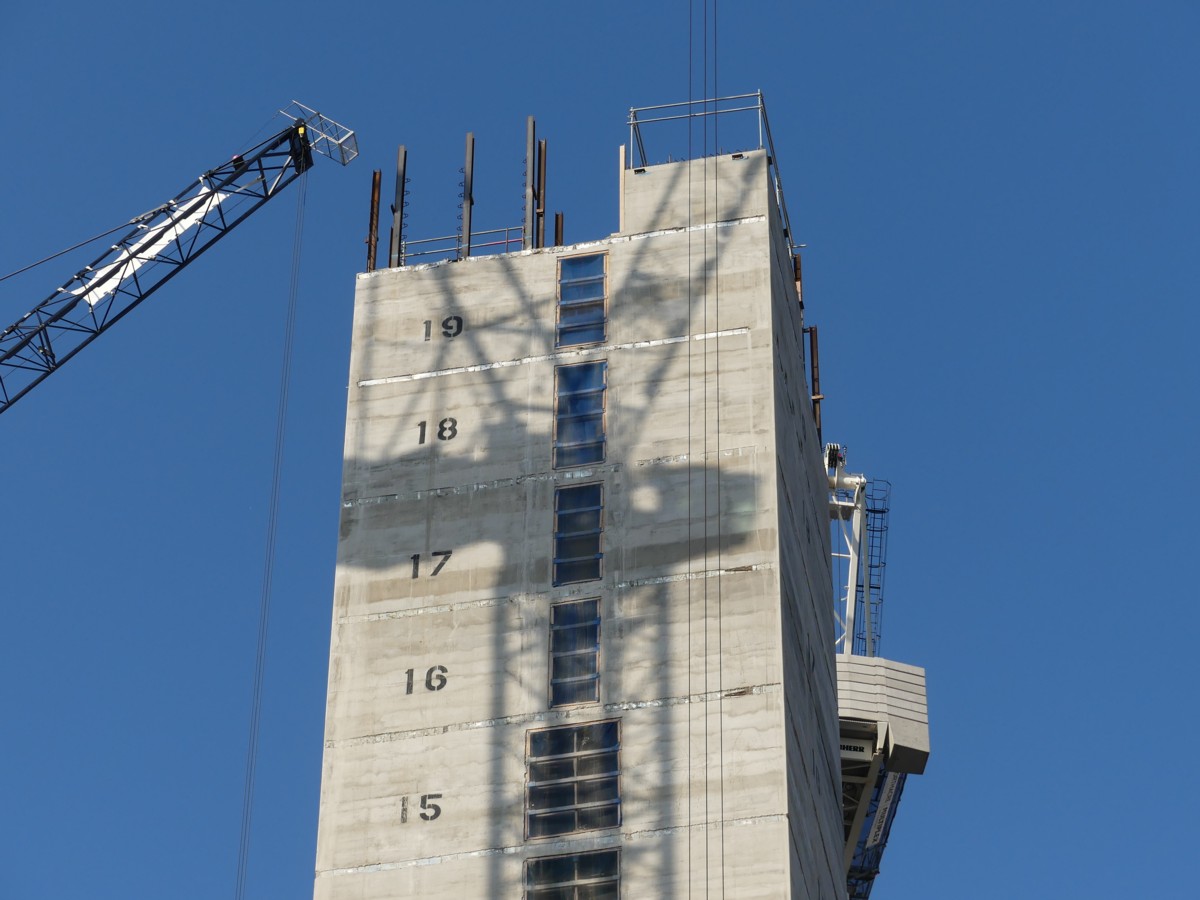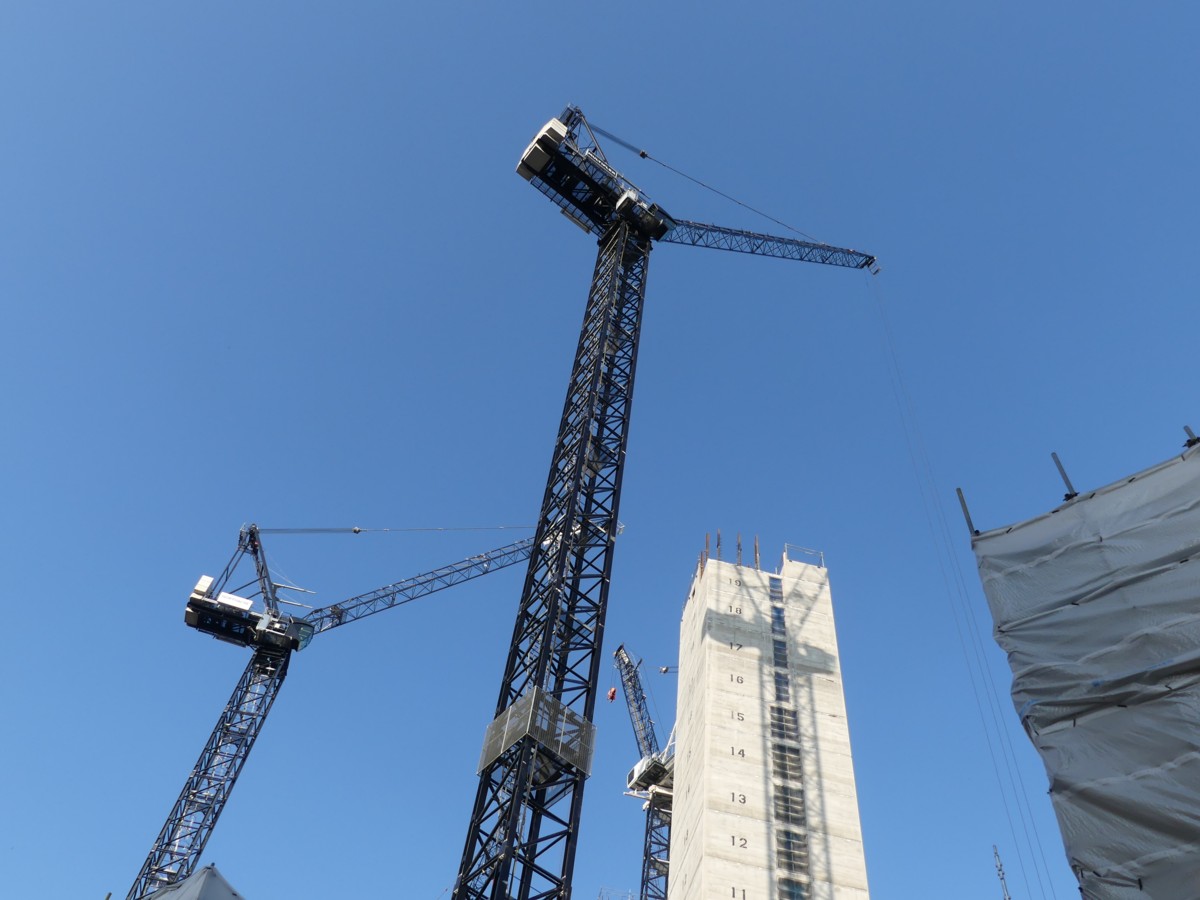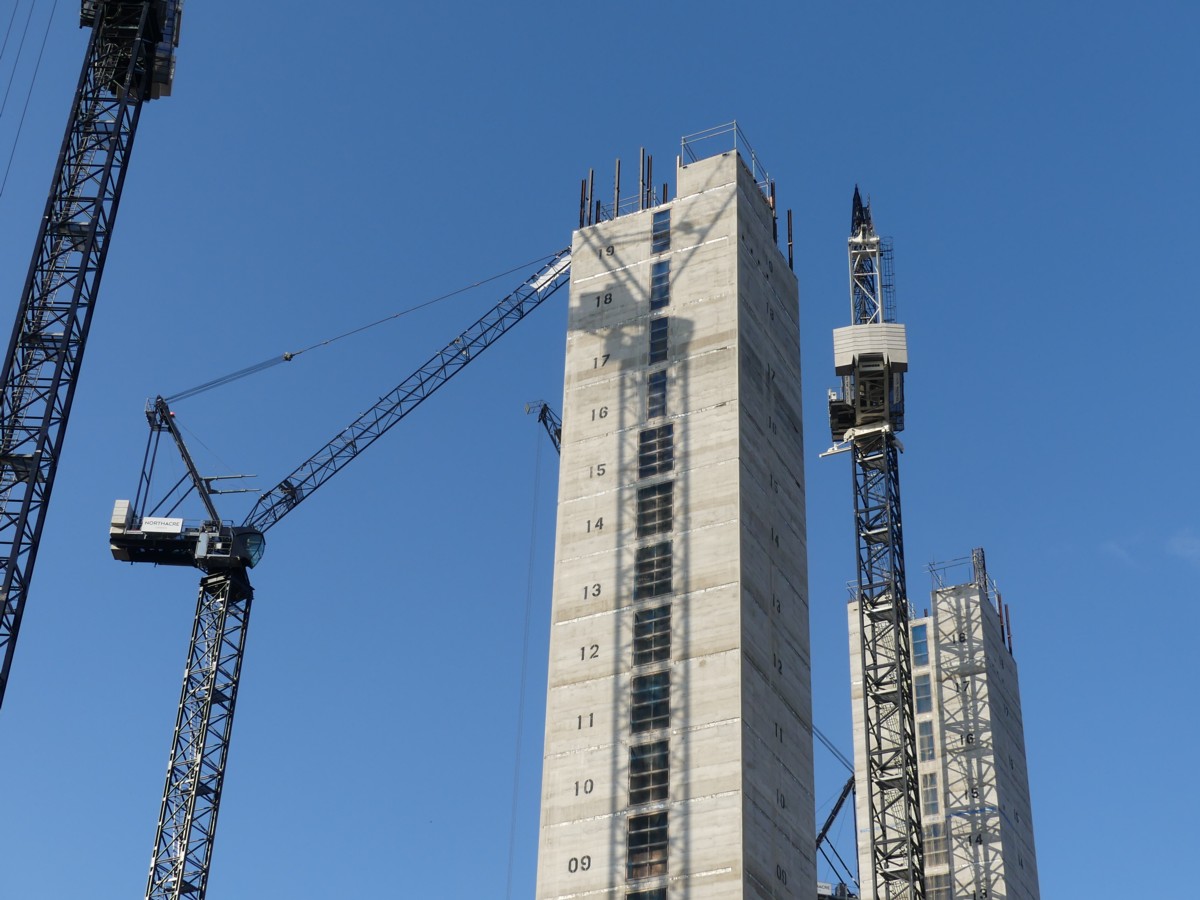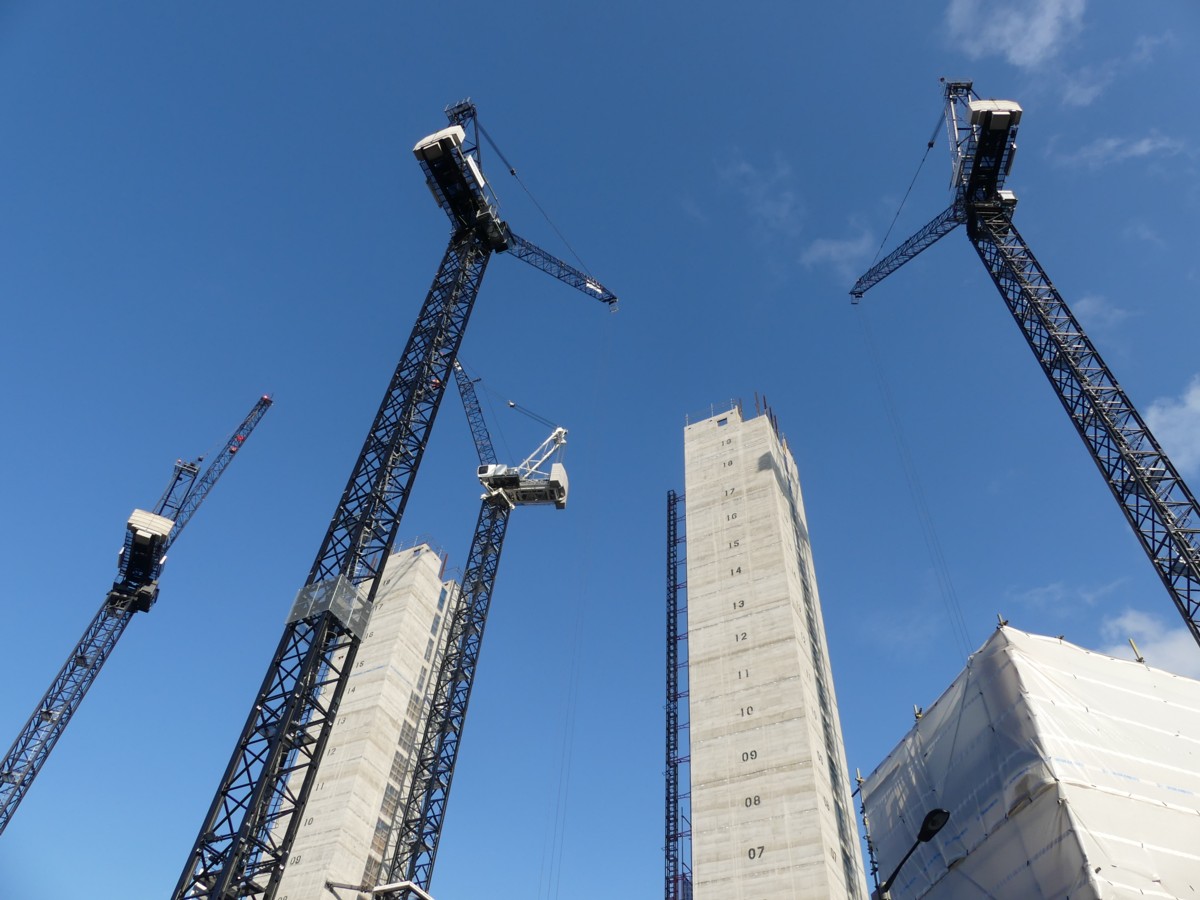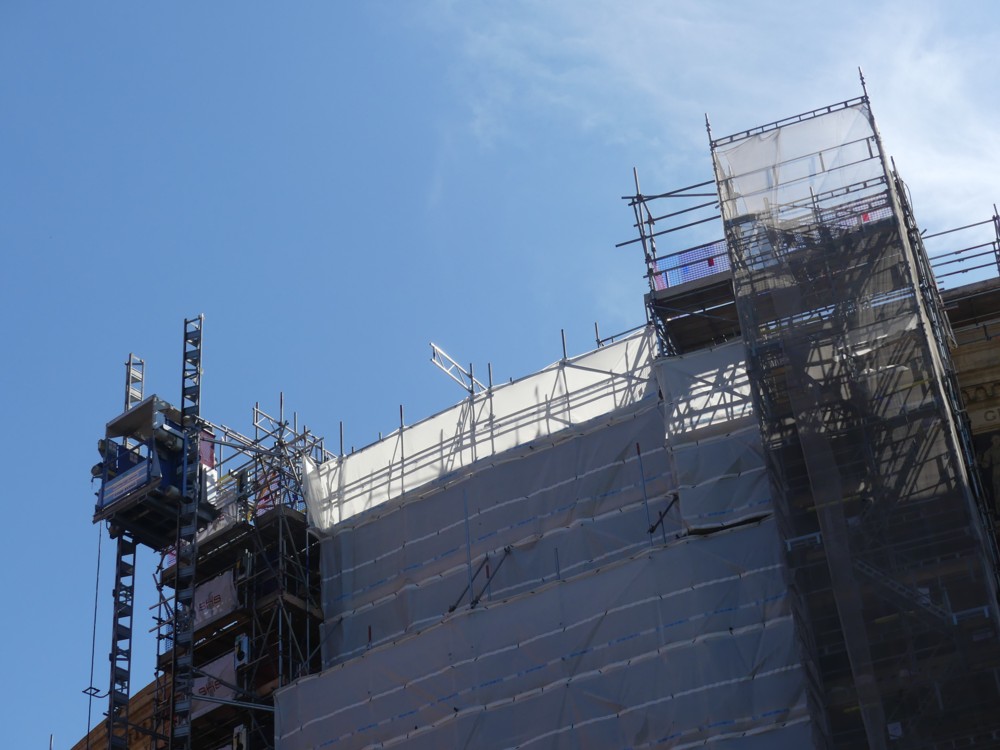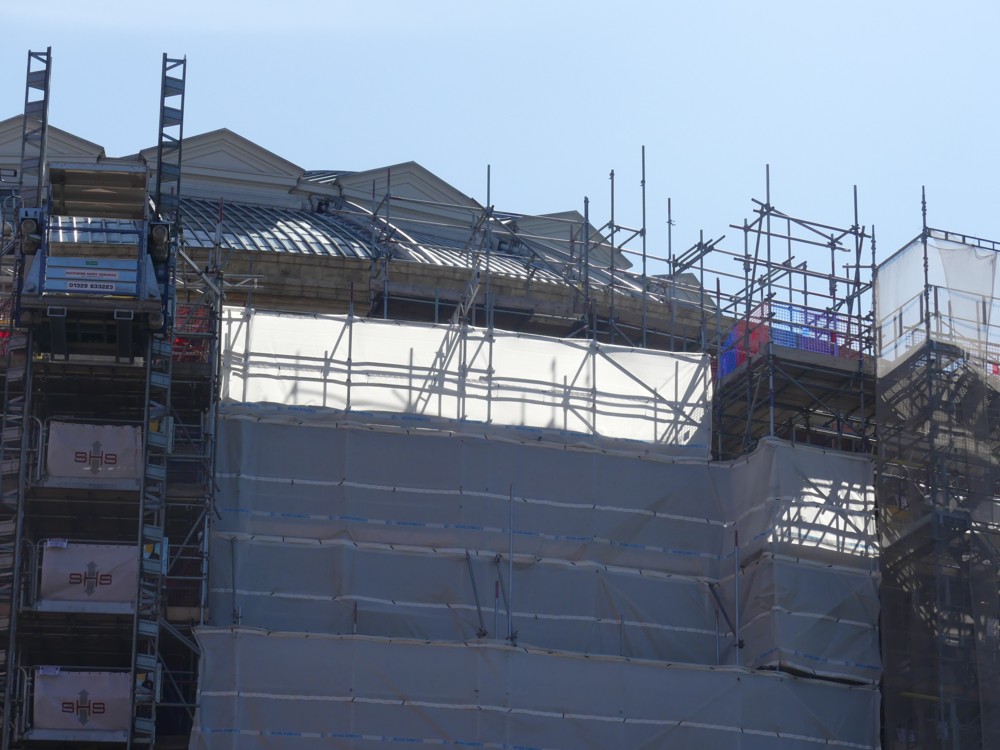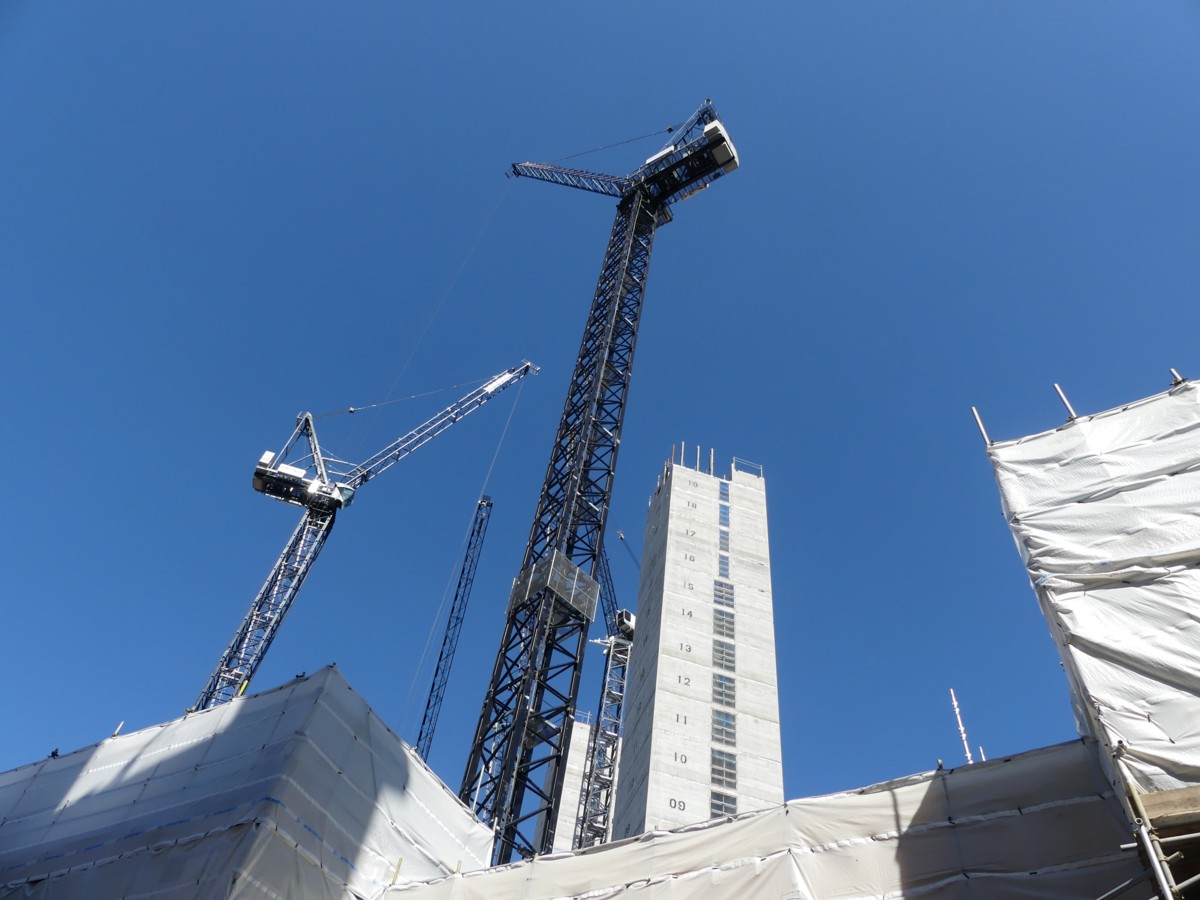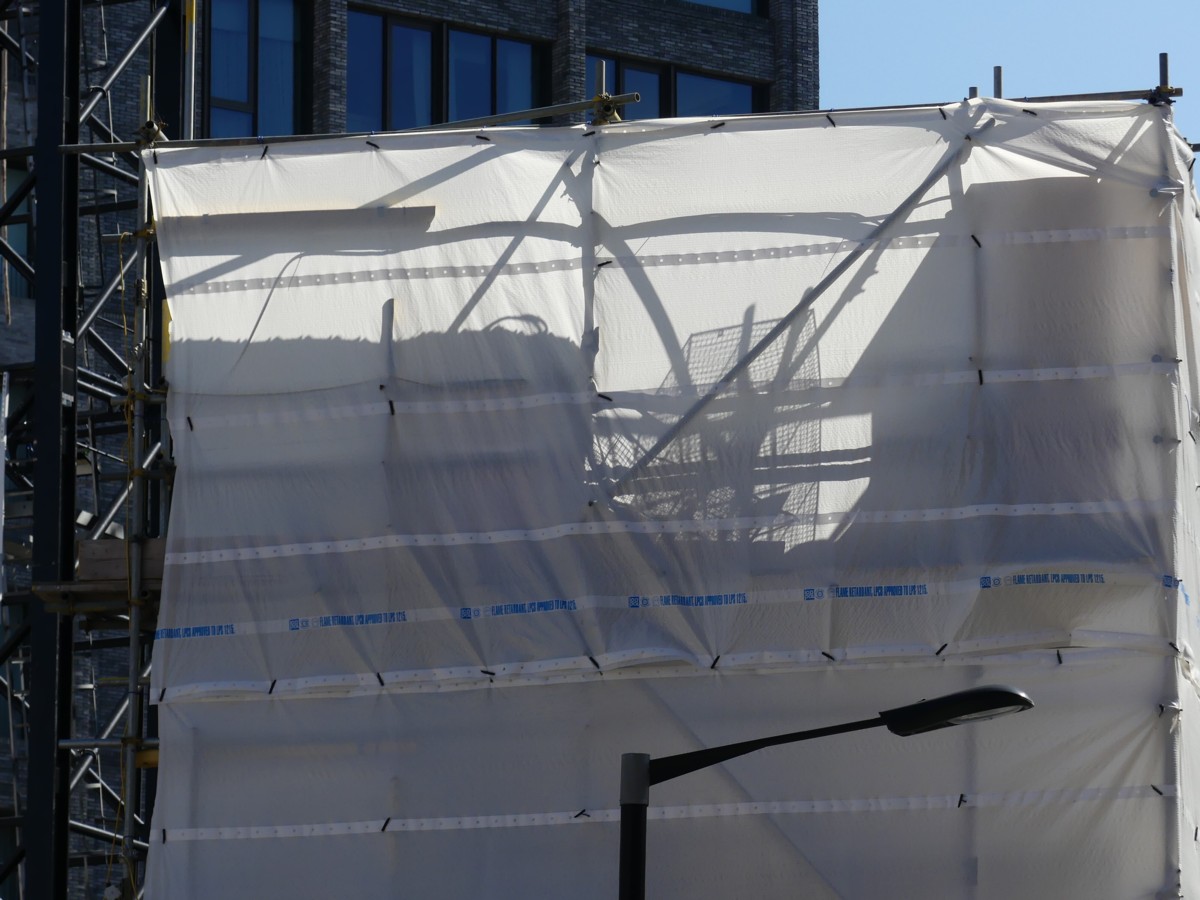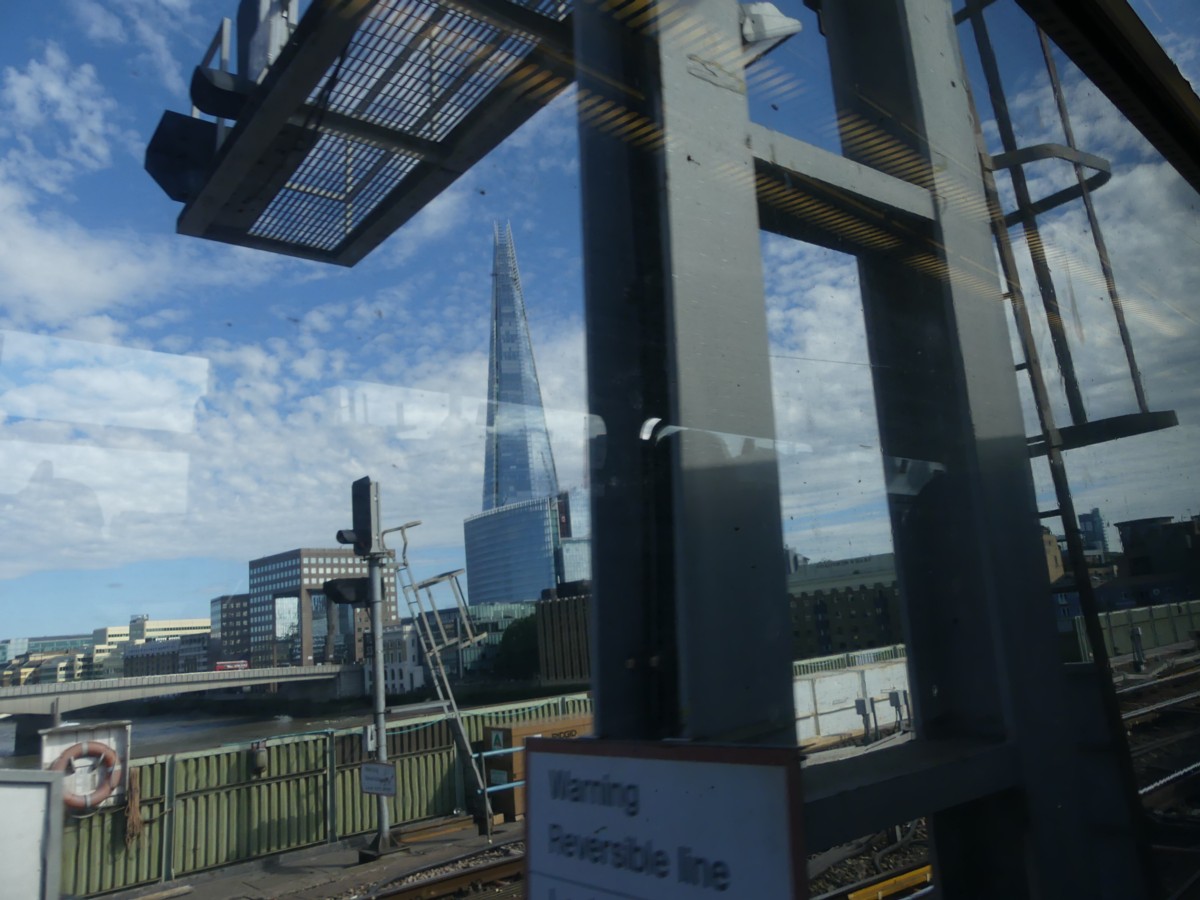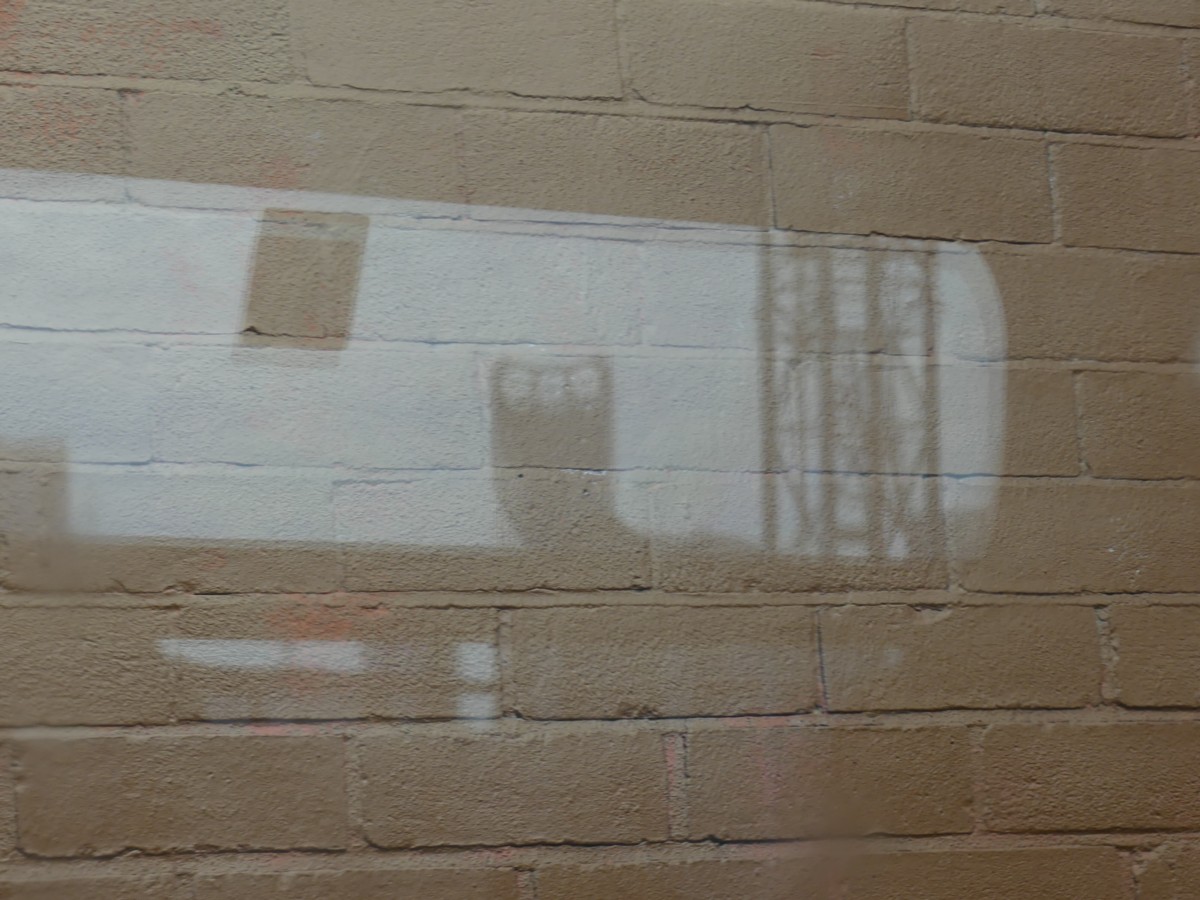Yesterday I went on the expedition I told myself yesterday I’d go on, which was good. Although, I didn’t do the Dangleway bit at the end, because I was too knackered.
Sadly, though, the weather forecast did something it never does usually. It was a bit wrong. It promised cloudless sky at the end of the expedition, but in reality, the cloudless sky came only at the start:
Cloudless sky turns almost any situation into a photo op, for me anyway, and those are four very early photos I photoed.
First, an orthodox photo with lots of blue sky, taken of the new apartments in Victoria Street that are taking shape, which I go past on my way to St James’s tube. When finished they’ll look approximately like this. That was their guess in 2016, so by now the guess will be different, but so what.
Second, the box of covered scaffolding on the right of the first photo was behaving in a particularly fun way. It is usually quite fun, but this was funner than usual.
Third, the sort of photo I quite often take when in a train. Nothing remarkable about it. Reflections in the window? Why is that a problem?
But fourth, it gets interesting. The train was travelling very slowly, because of overheating track or some such thing. And this last photo was taken when the train was stuck, immobile, between stations, next to a wall. What we see there are not shadows, they are the reflections (see above) of what is to be seen through the train window opposite. What I like is how very recognisable that building is, the one with three holes in it. To me, anyway. And that’s clearly a crane tower in the foreground of the reflected scene. Which is good.
Photography is light.

